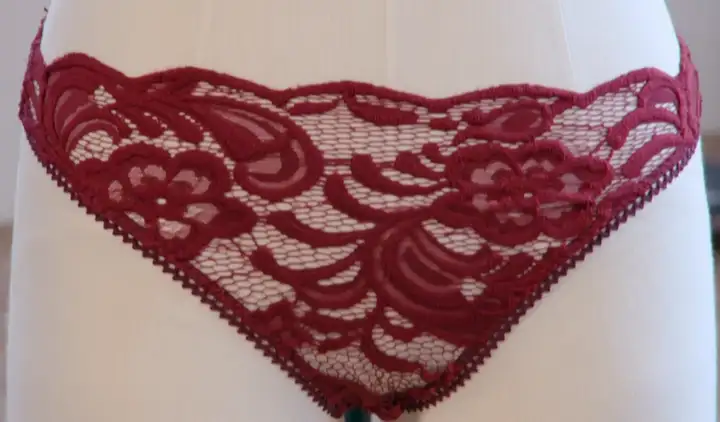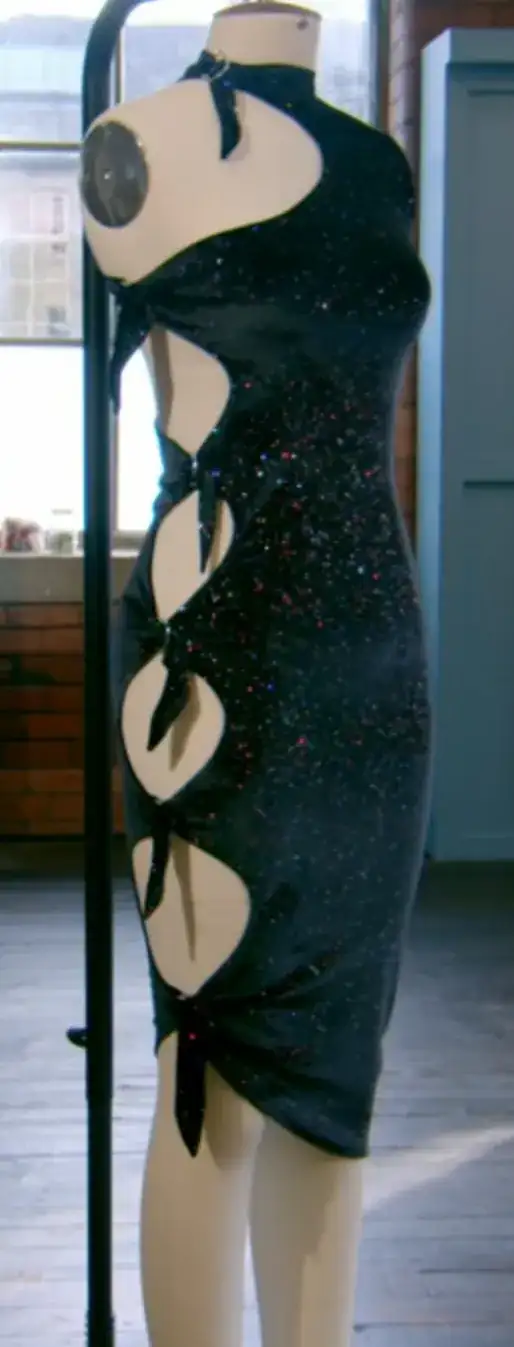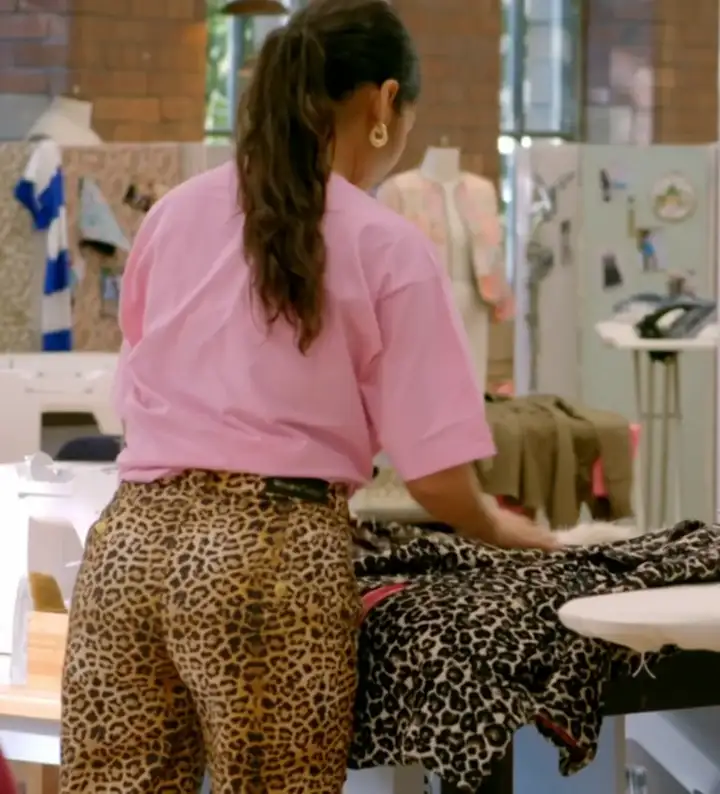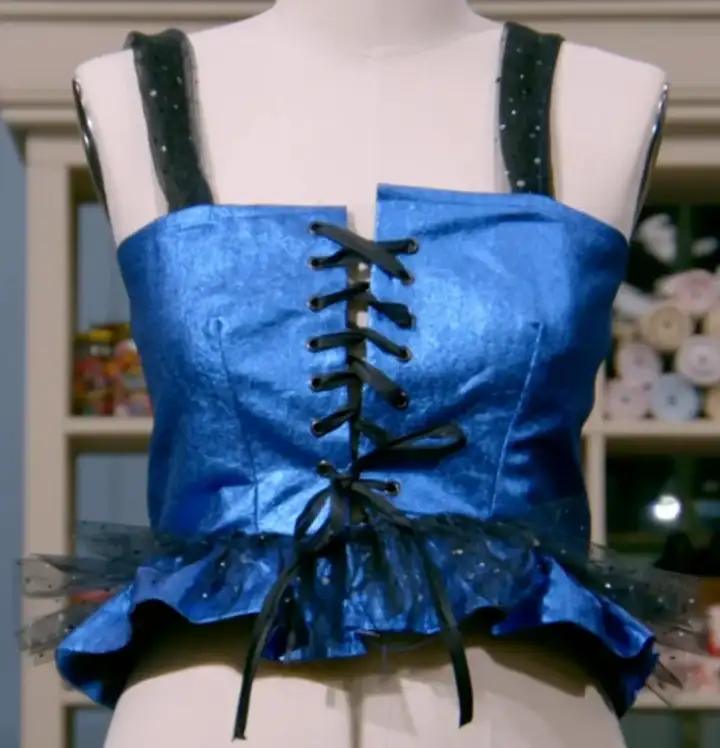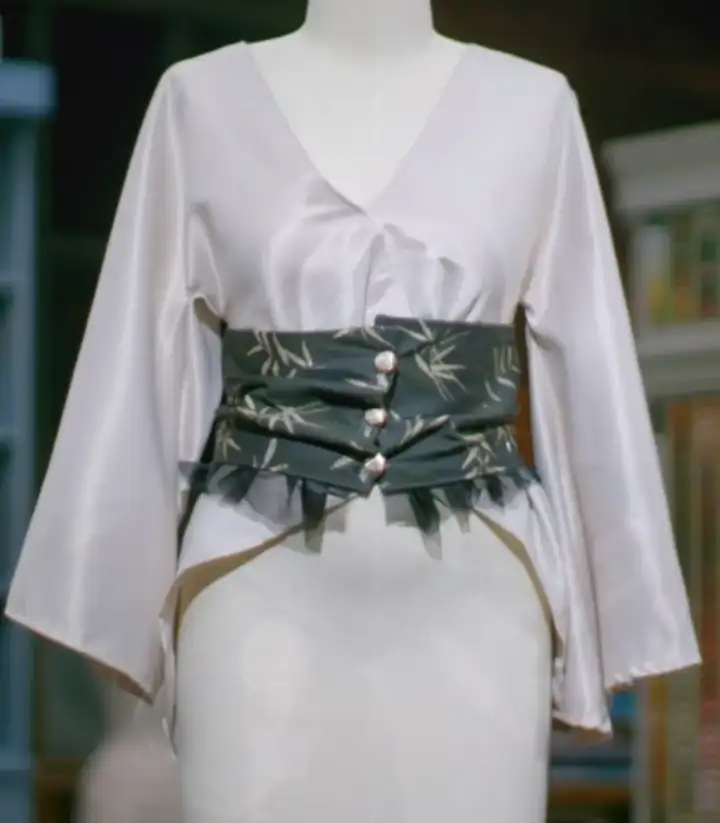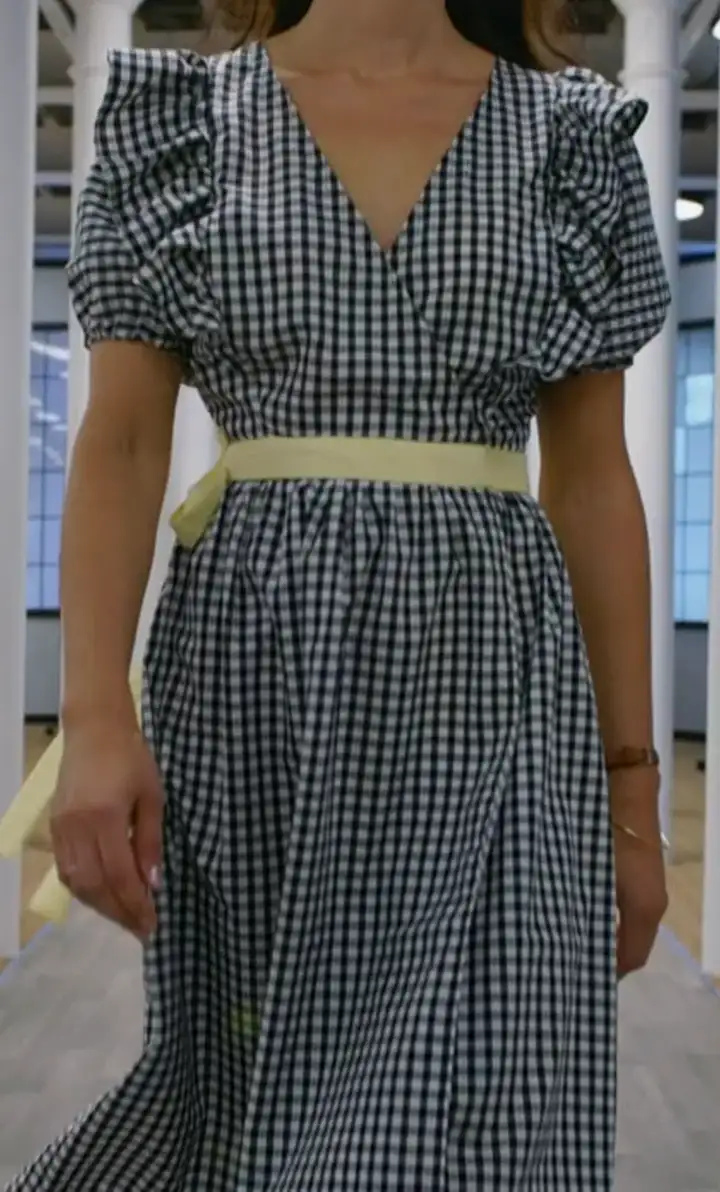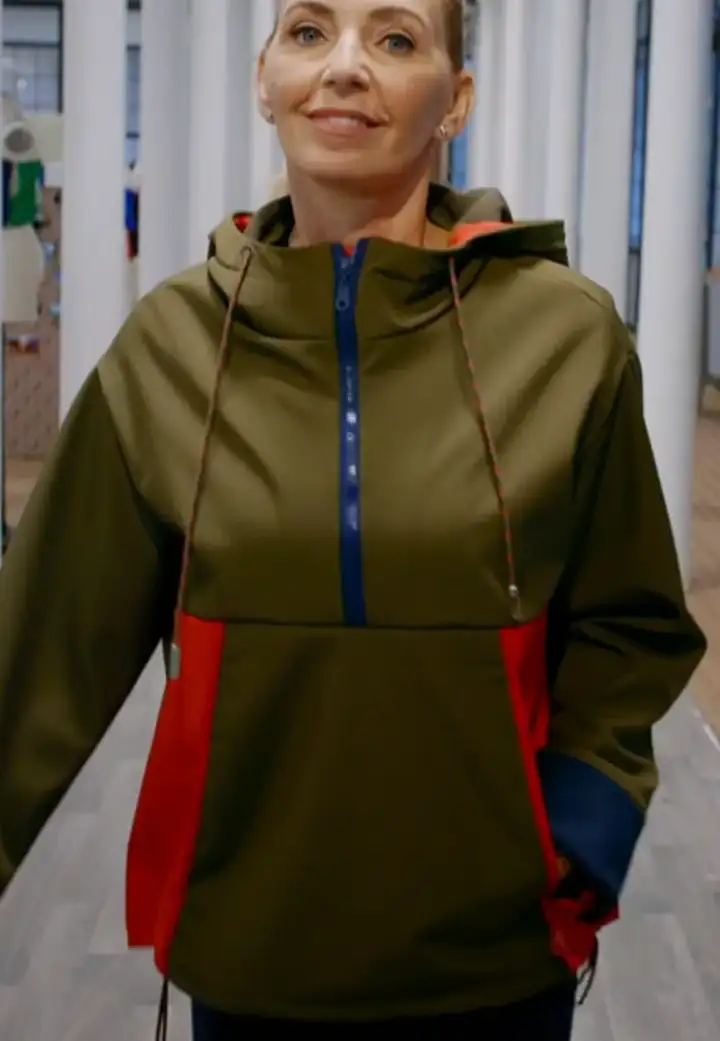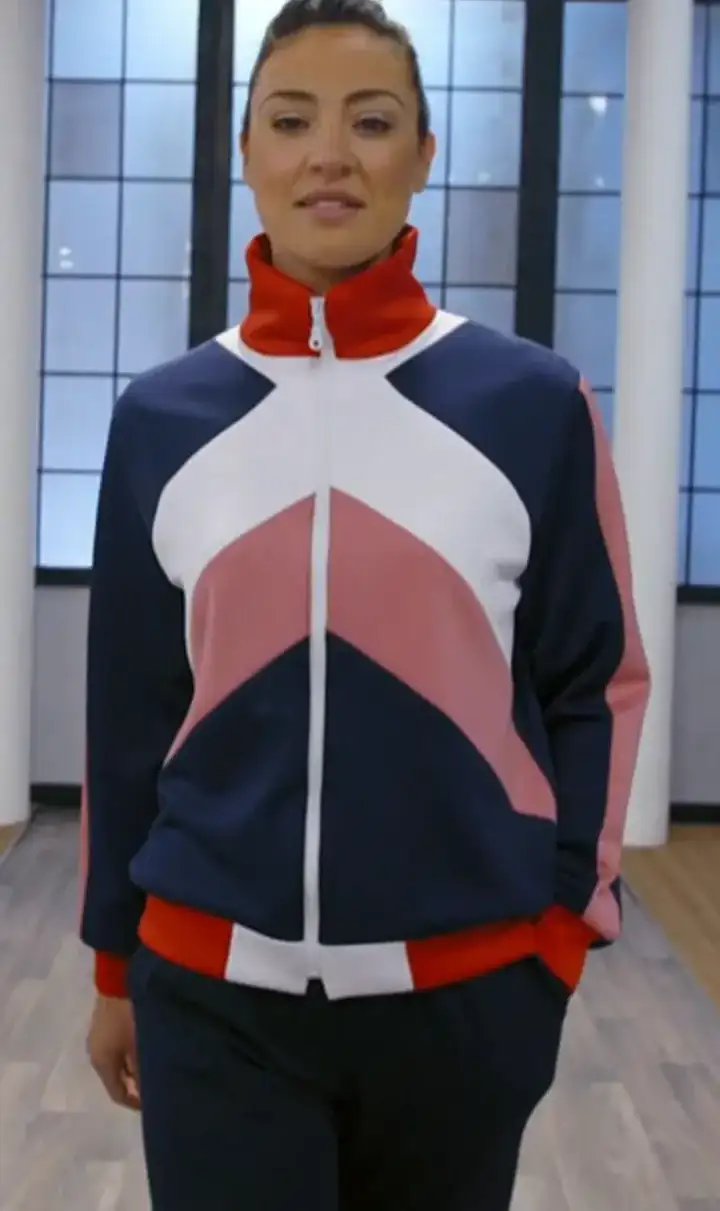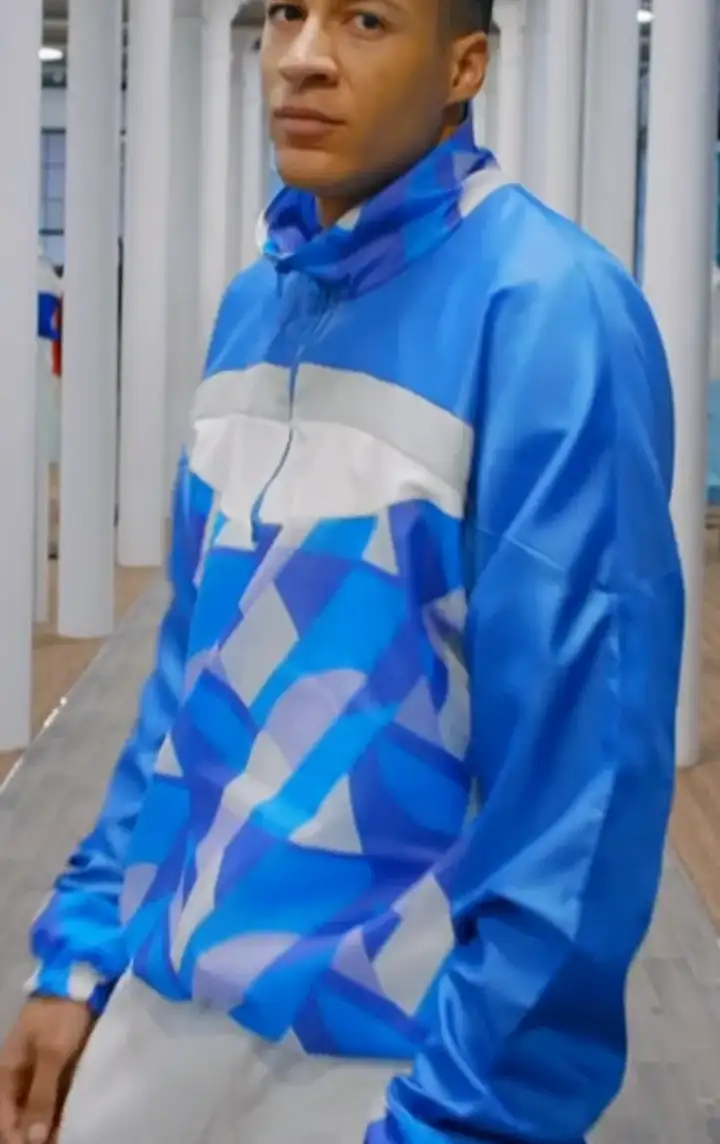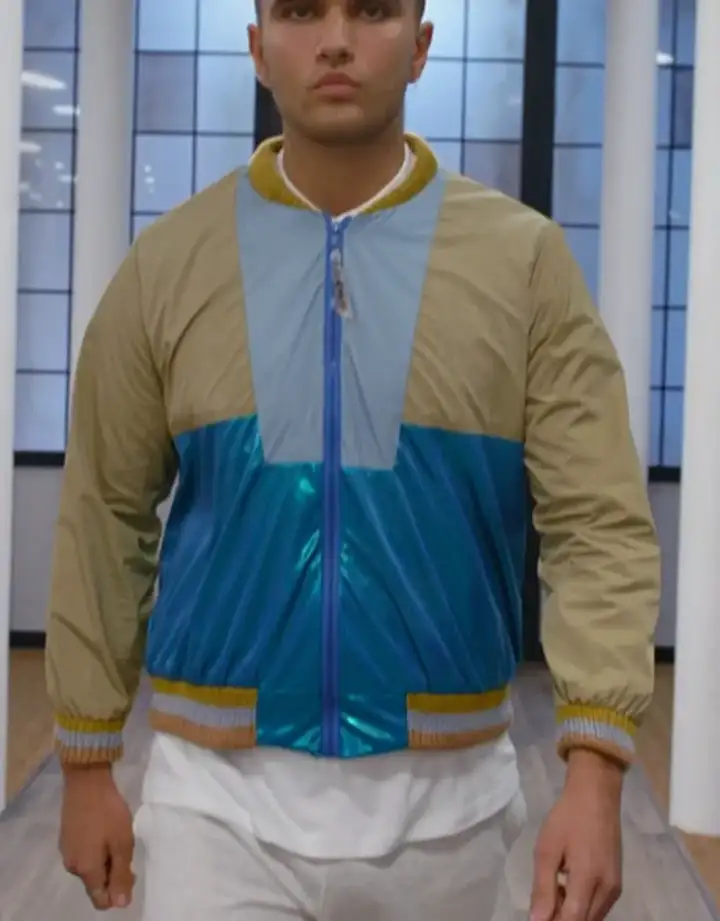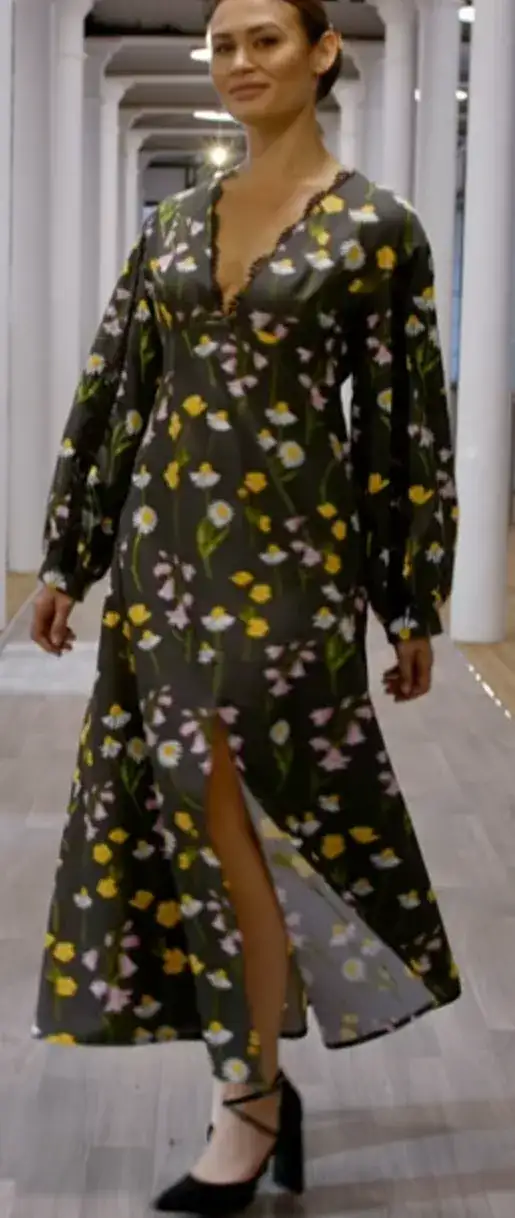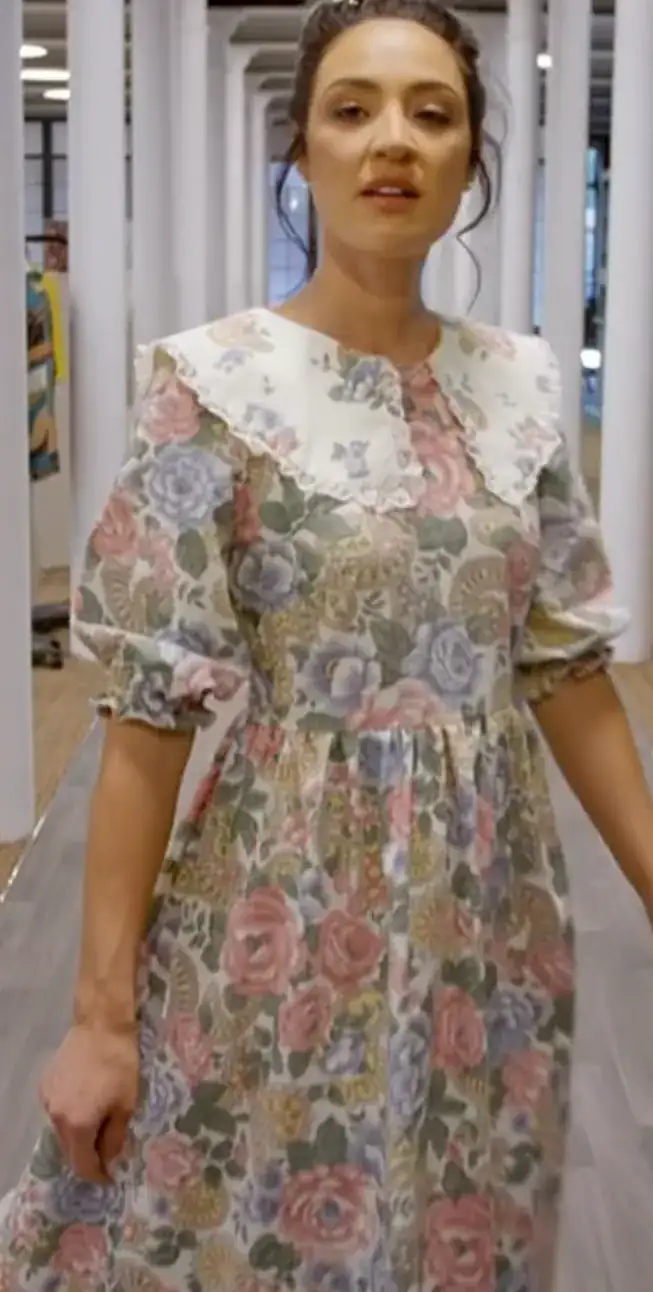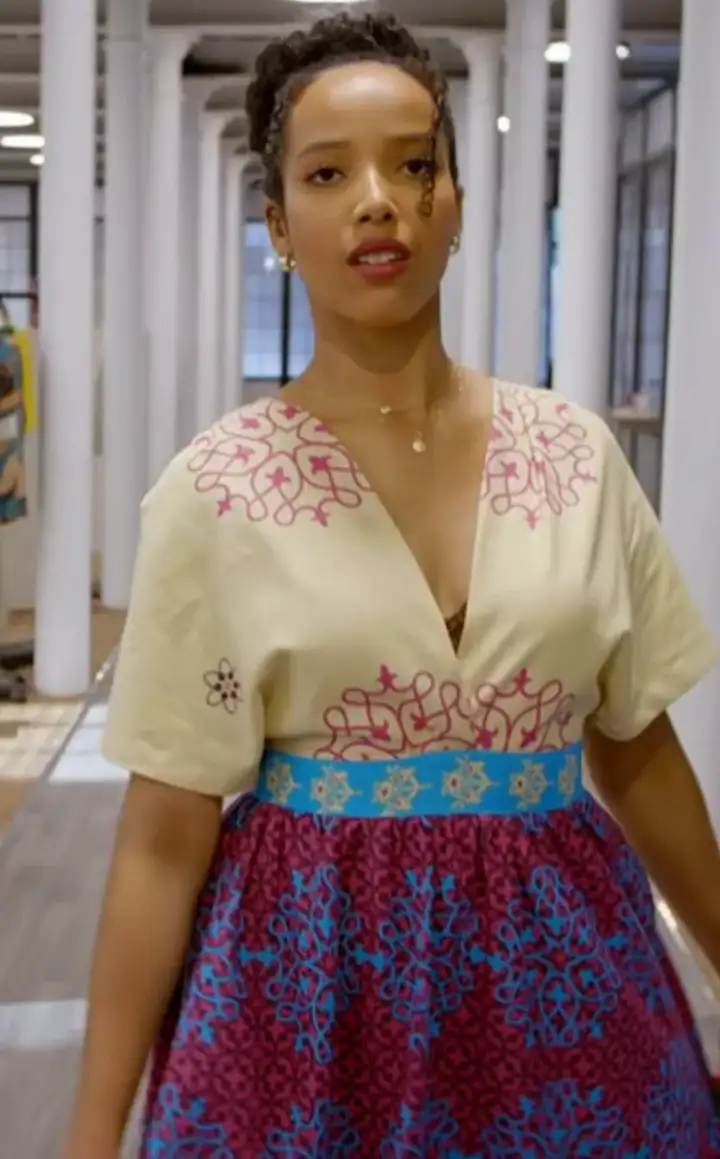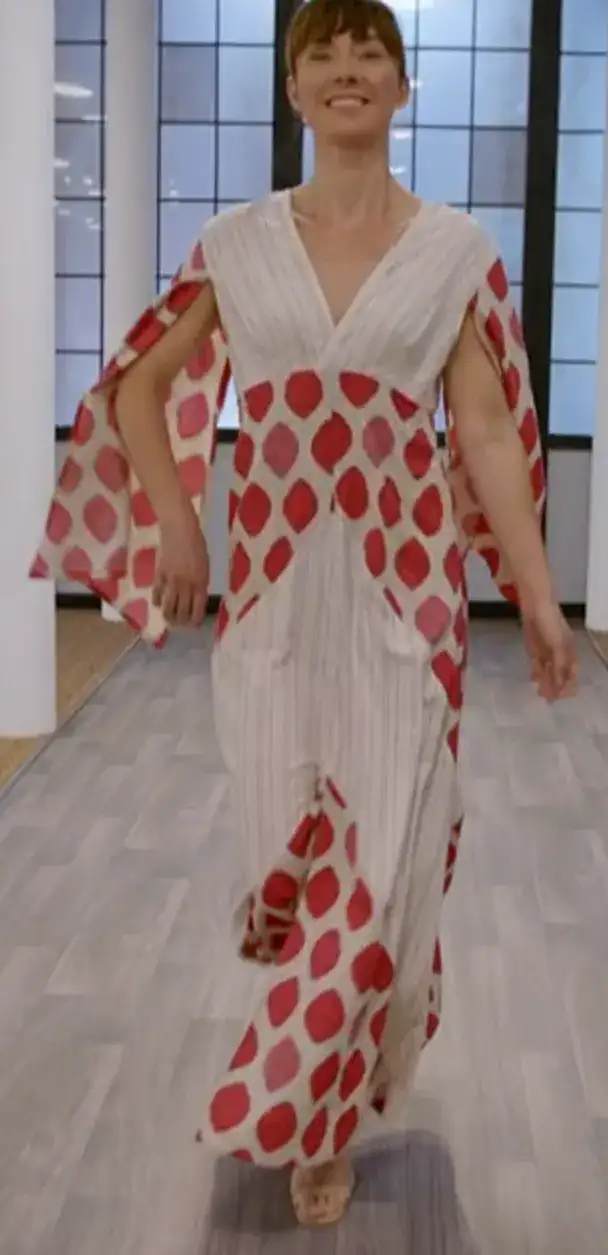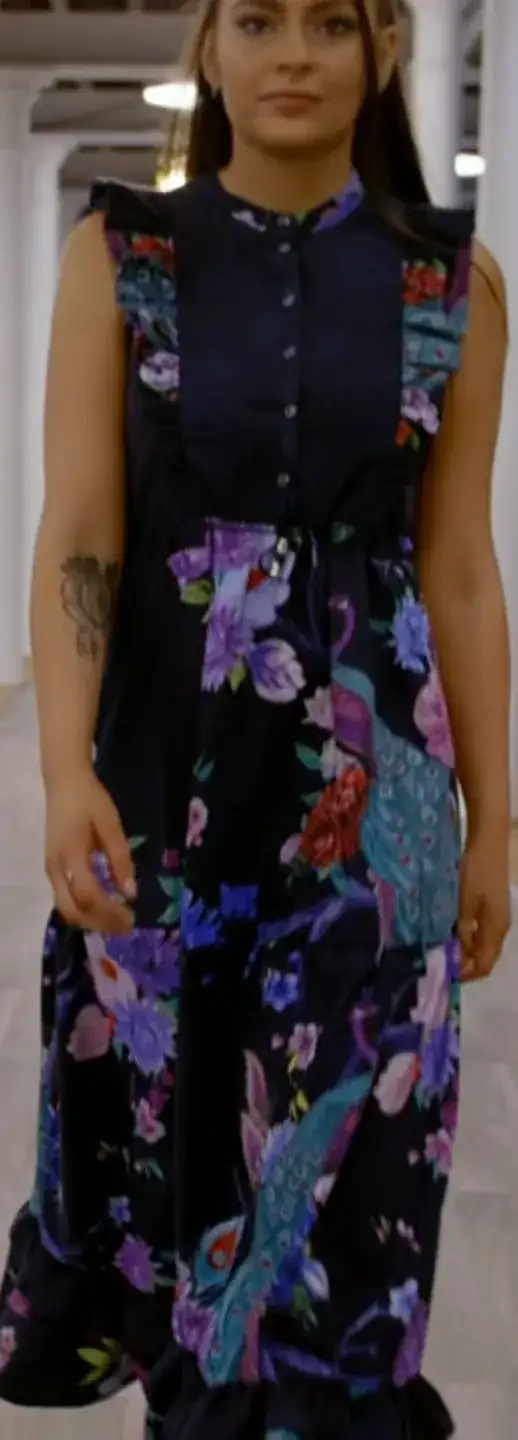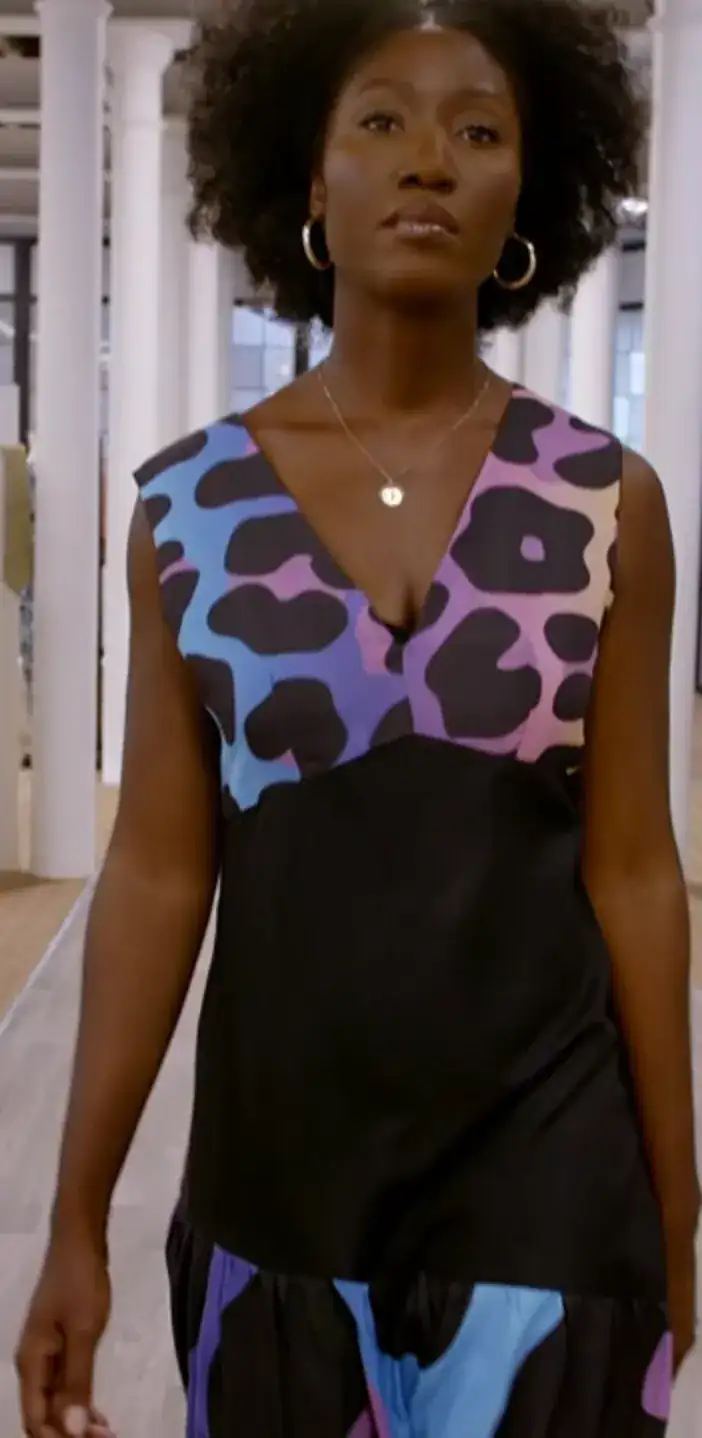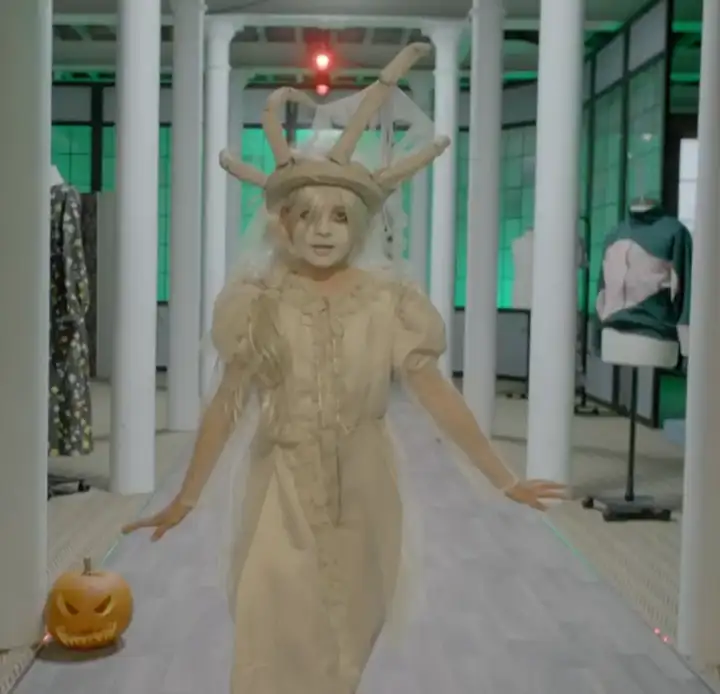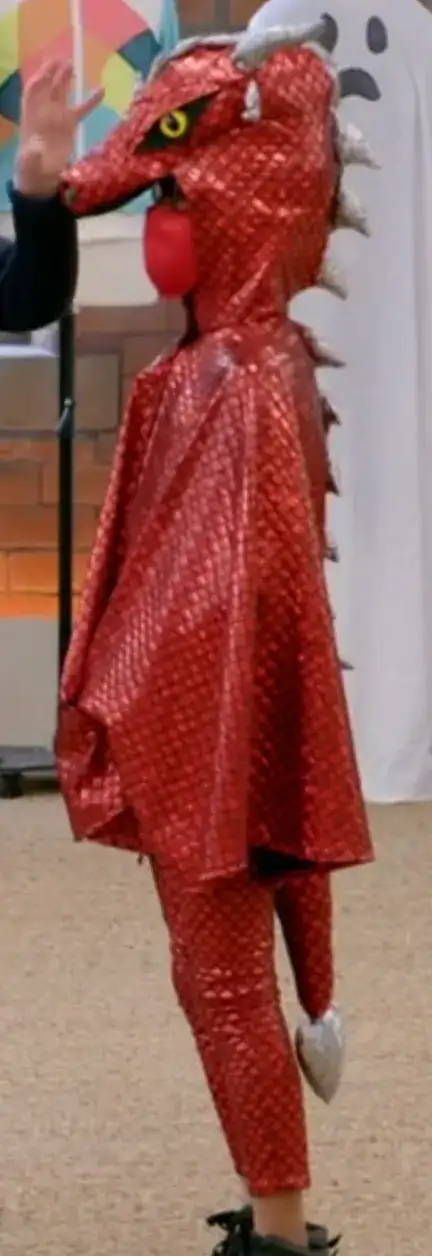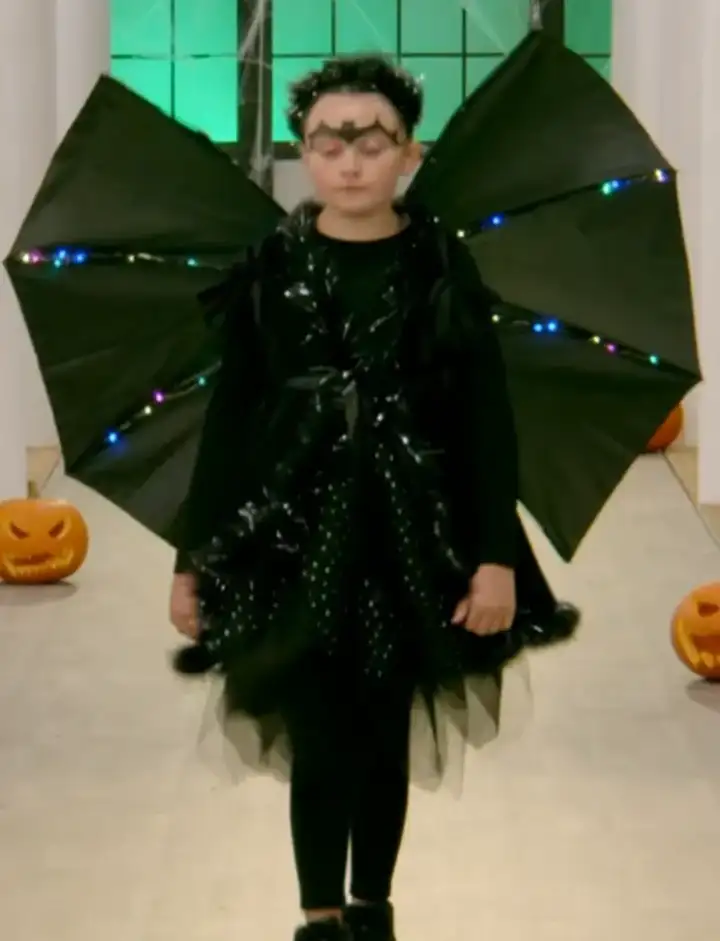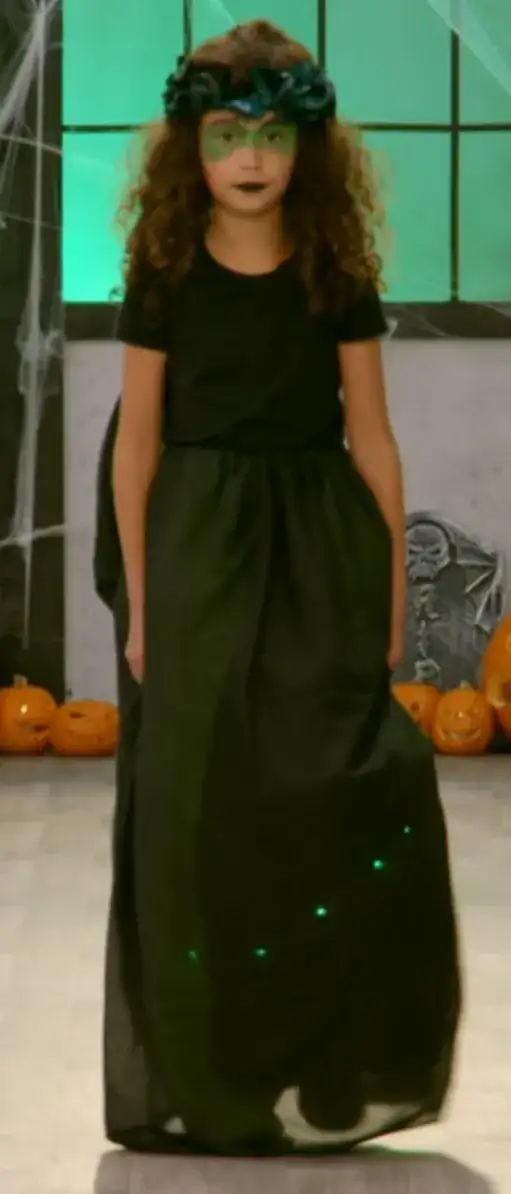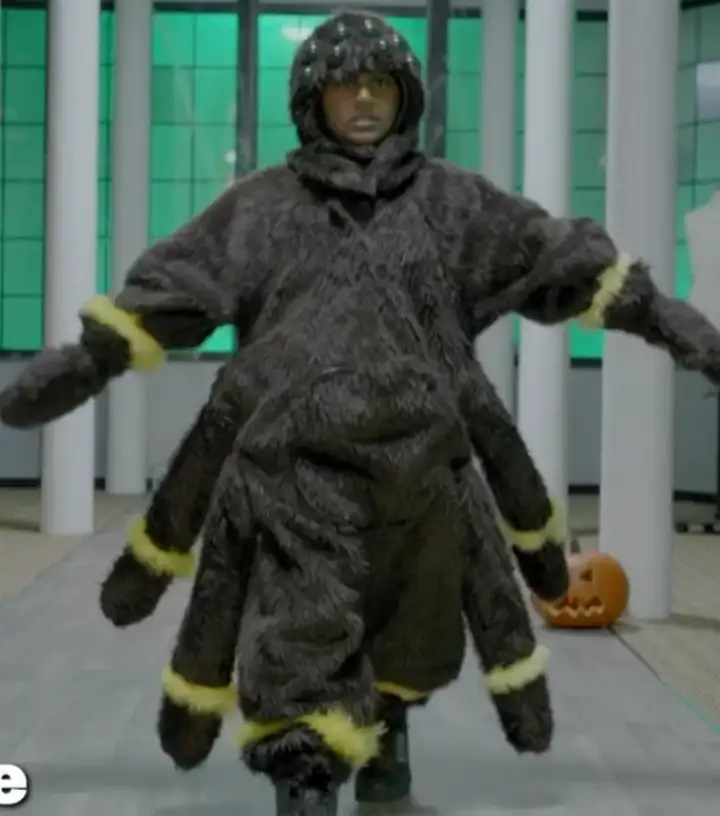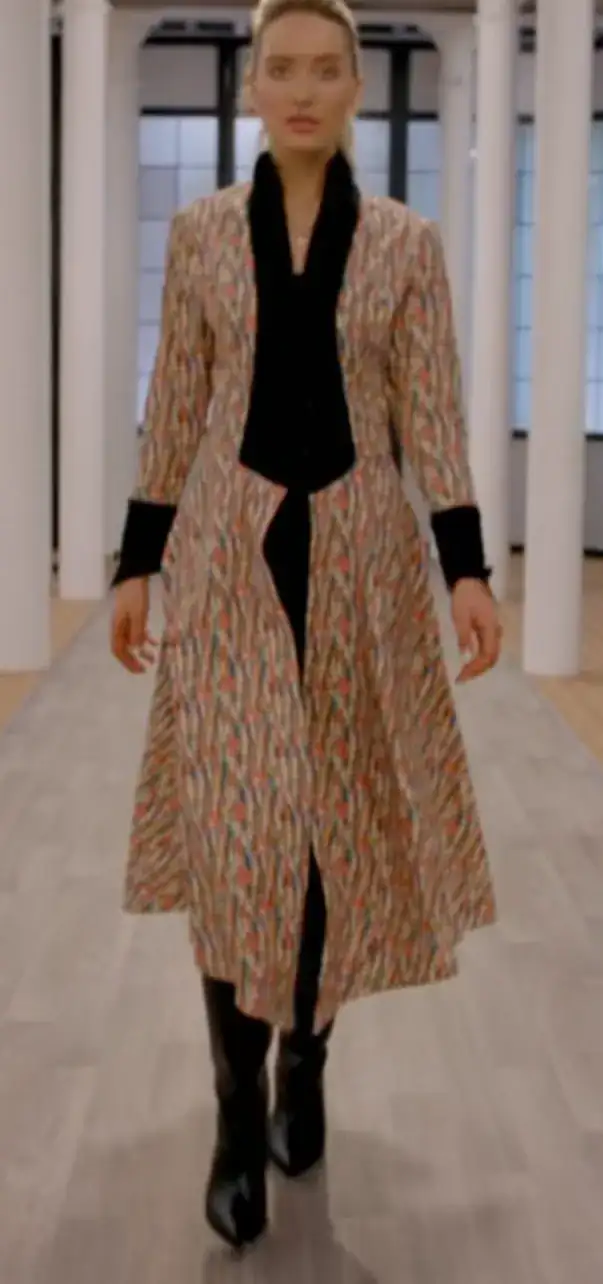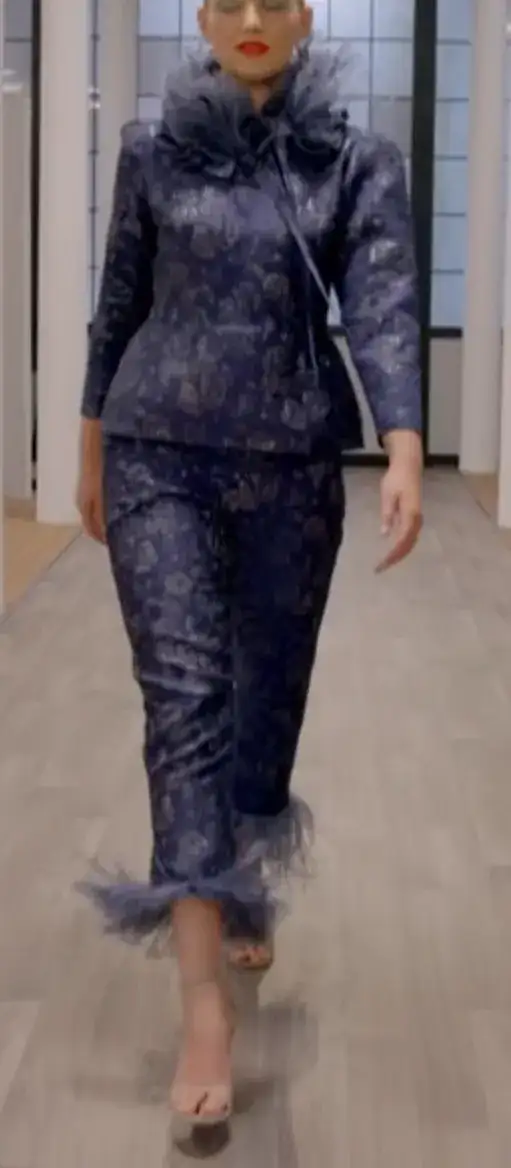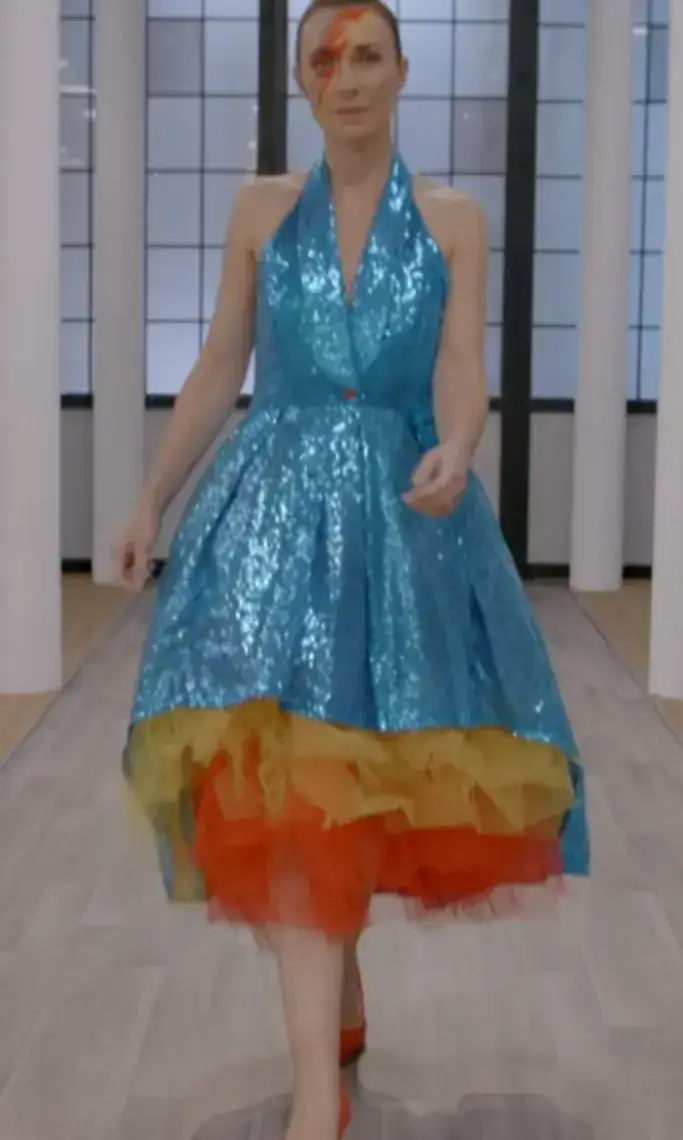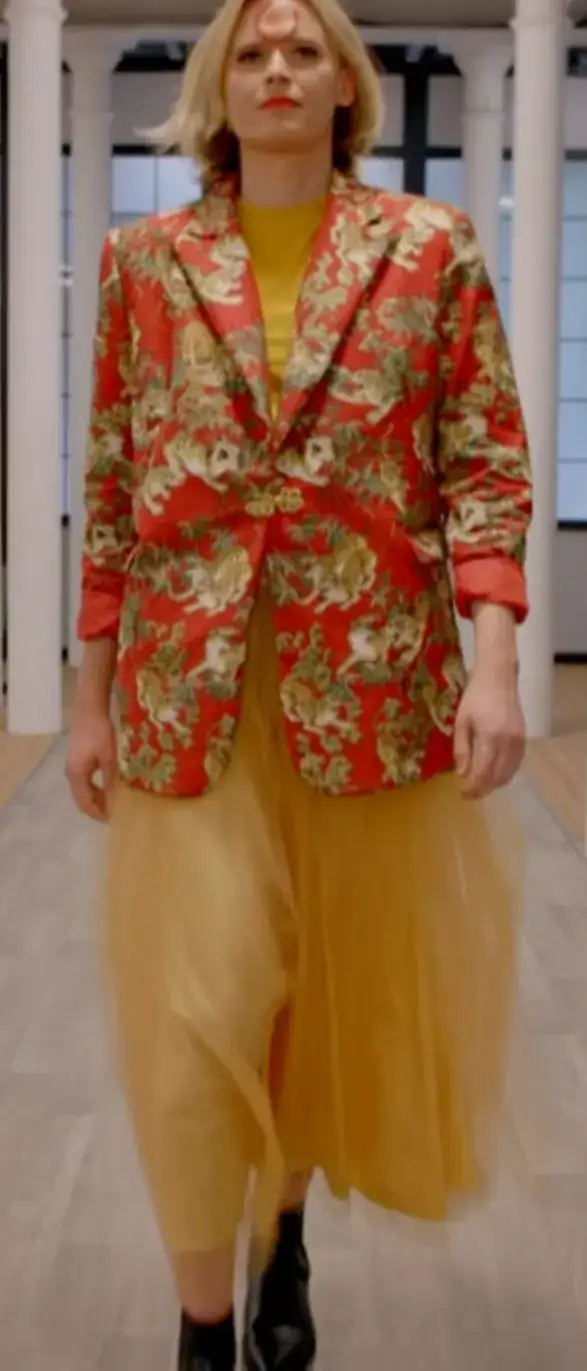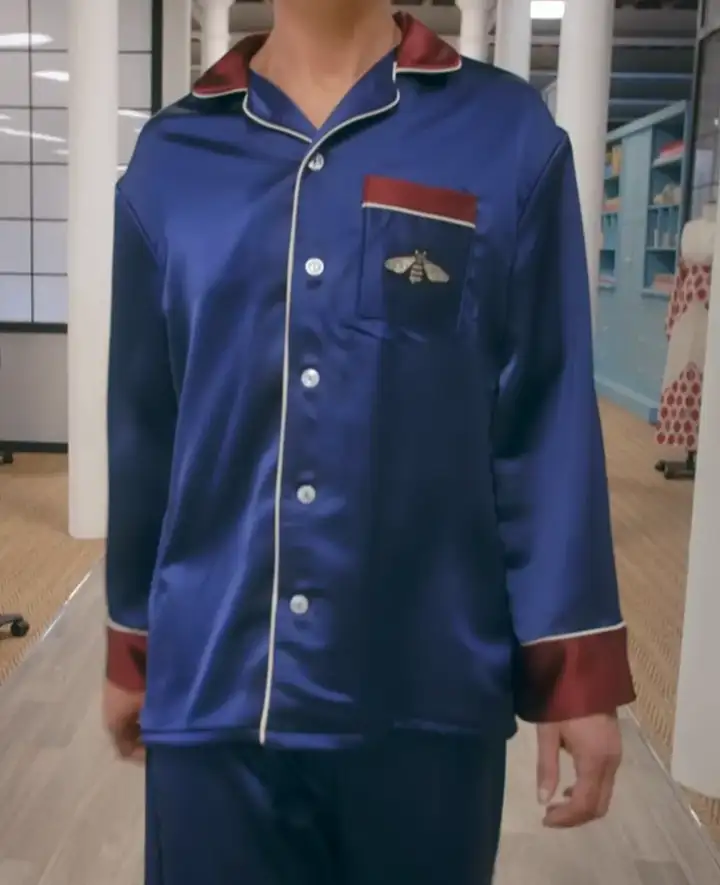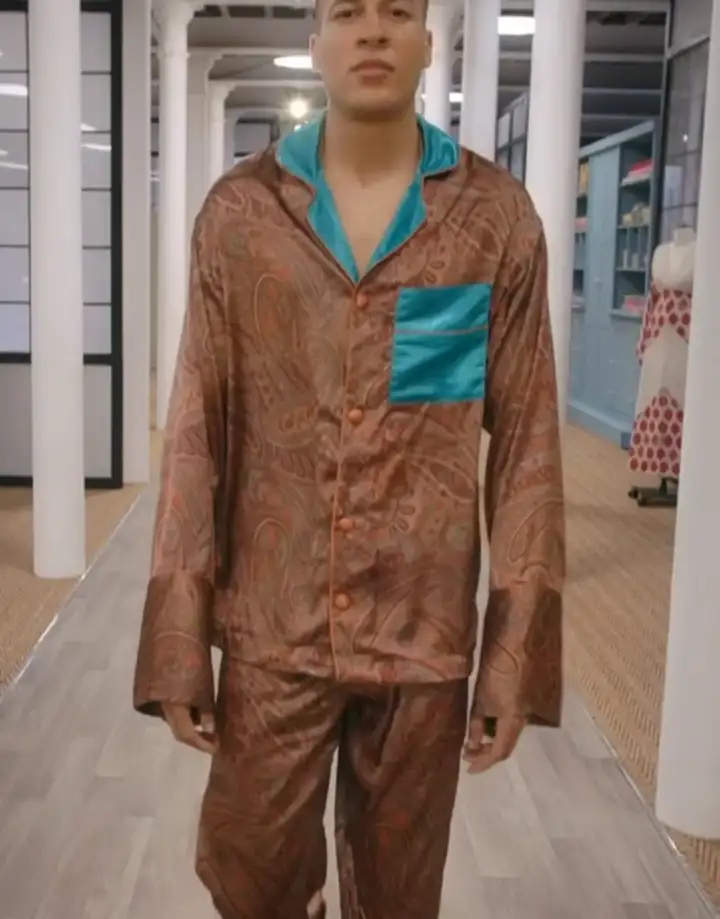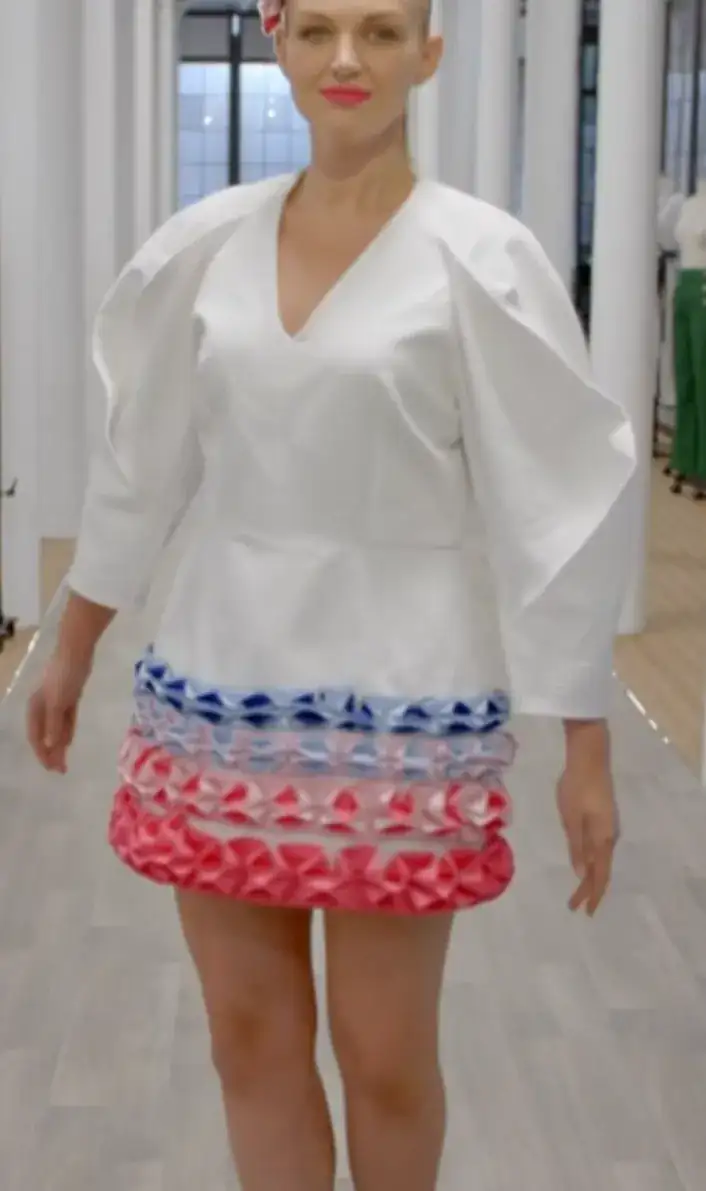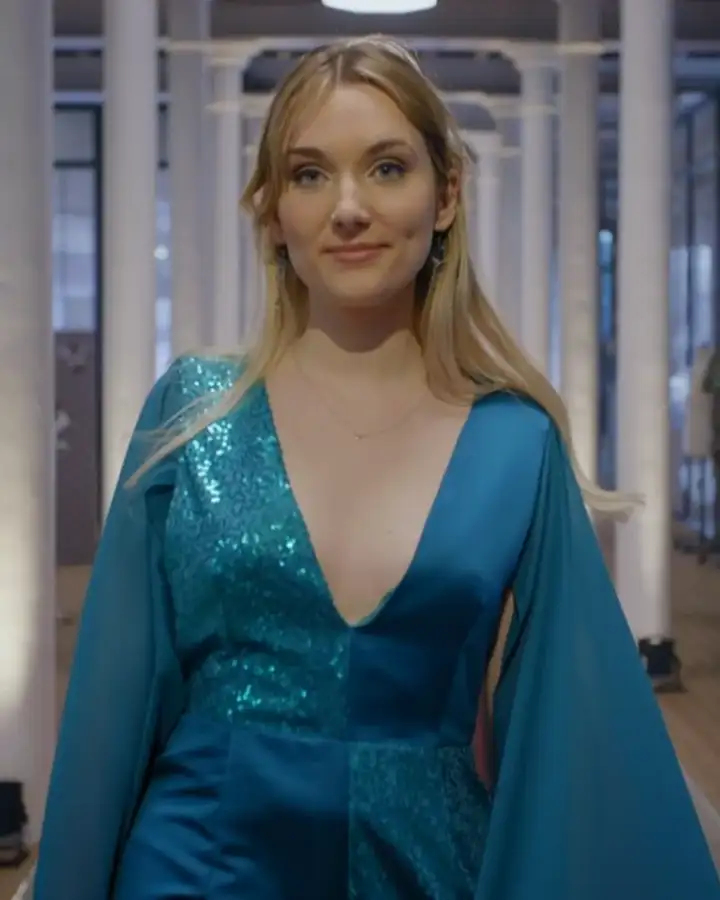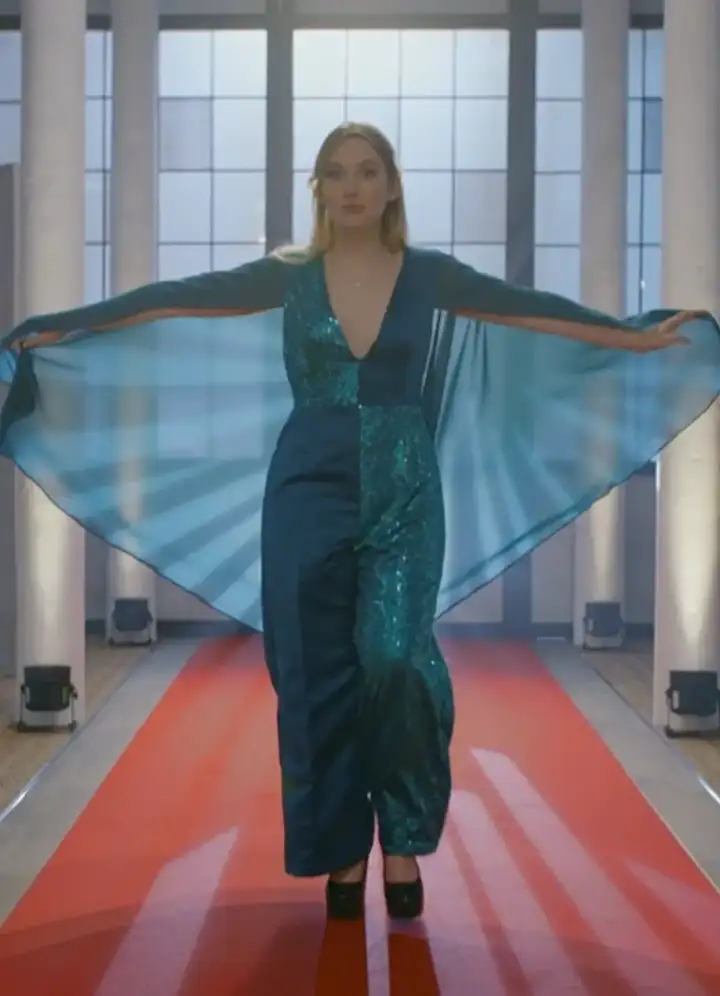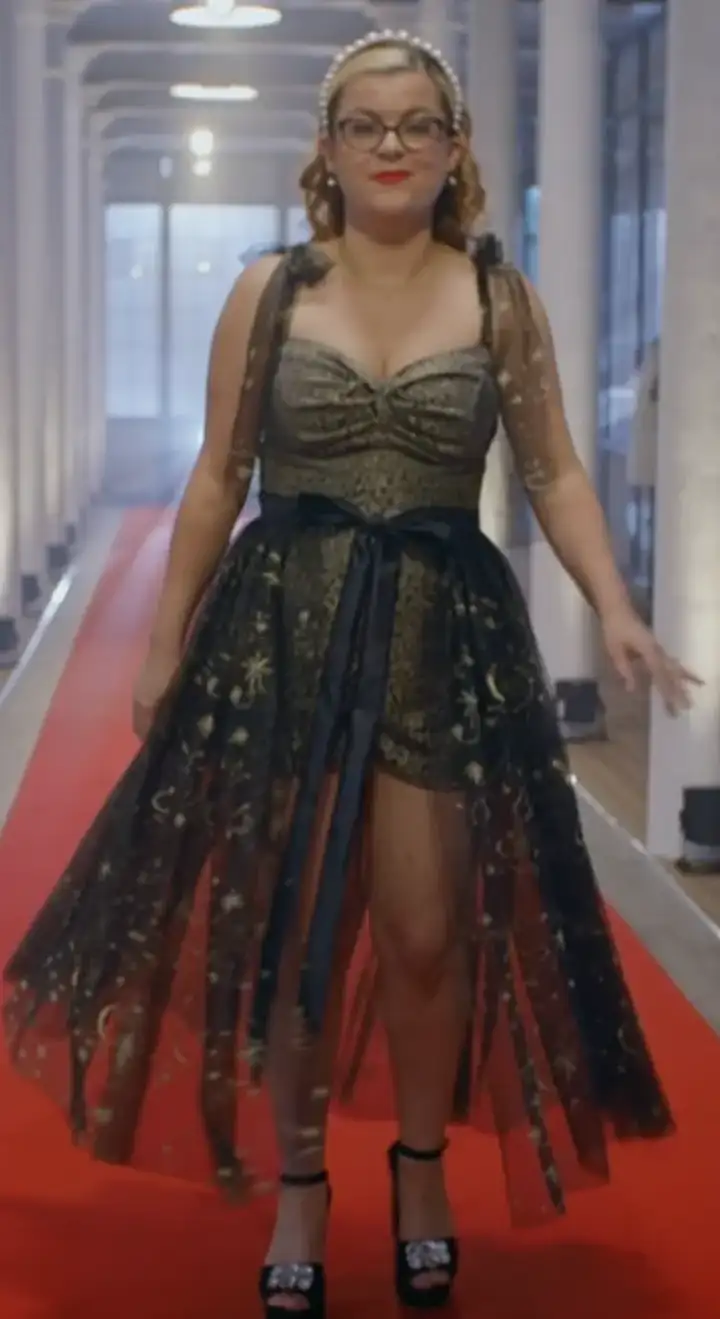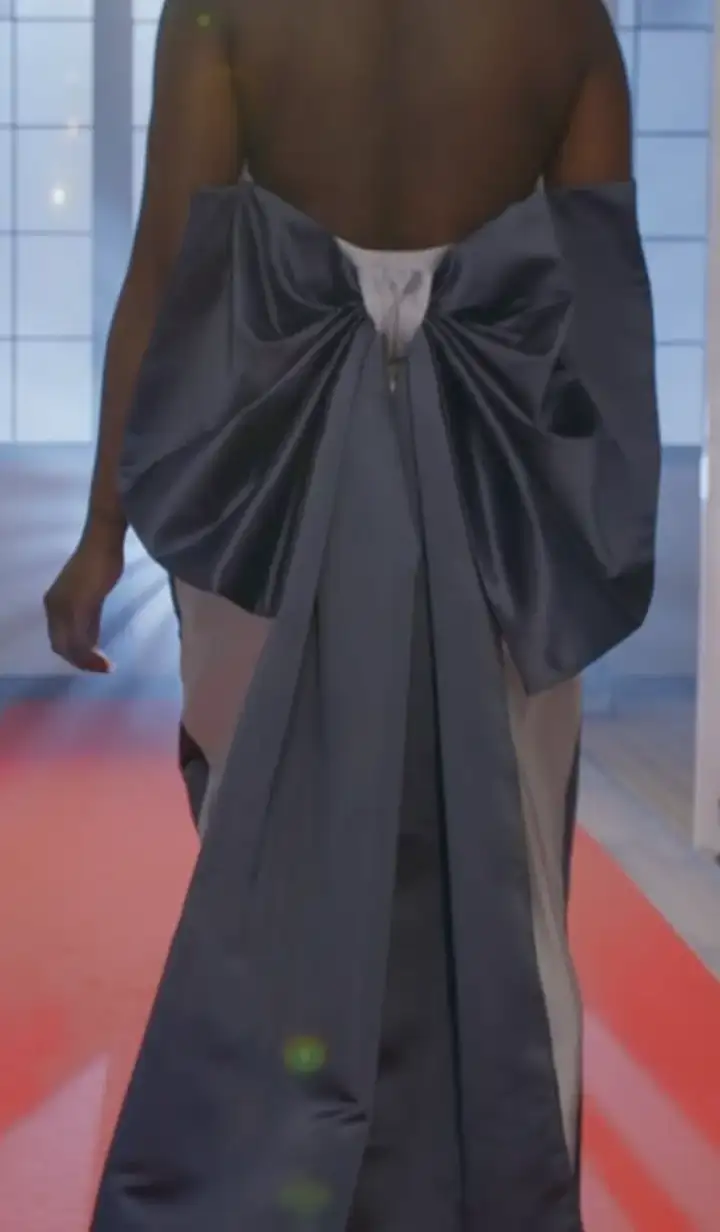
The Great British Sewing Bee - Season Eight
The Great British Sewing Bee - Season Eight
Season 8 of the BBC reality television series, The Great British Sewing Bee (TGBSB), first broadcast in 2022, was filmed in an early 19th century woollen cloth mill complex Sunny Bank Mills in the town of Pudsey located between Bradford and Leeds approximately 200 miles from London. Street address is 88 Town St, Farsley, Pudsey LS28 5UJ. The filming took place in the 1912 Building / 1912 Mill.
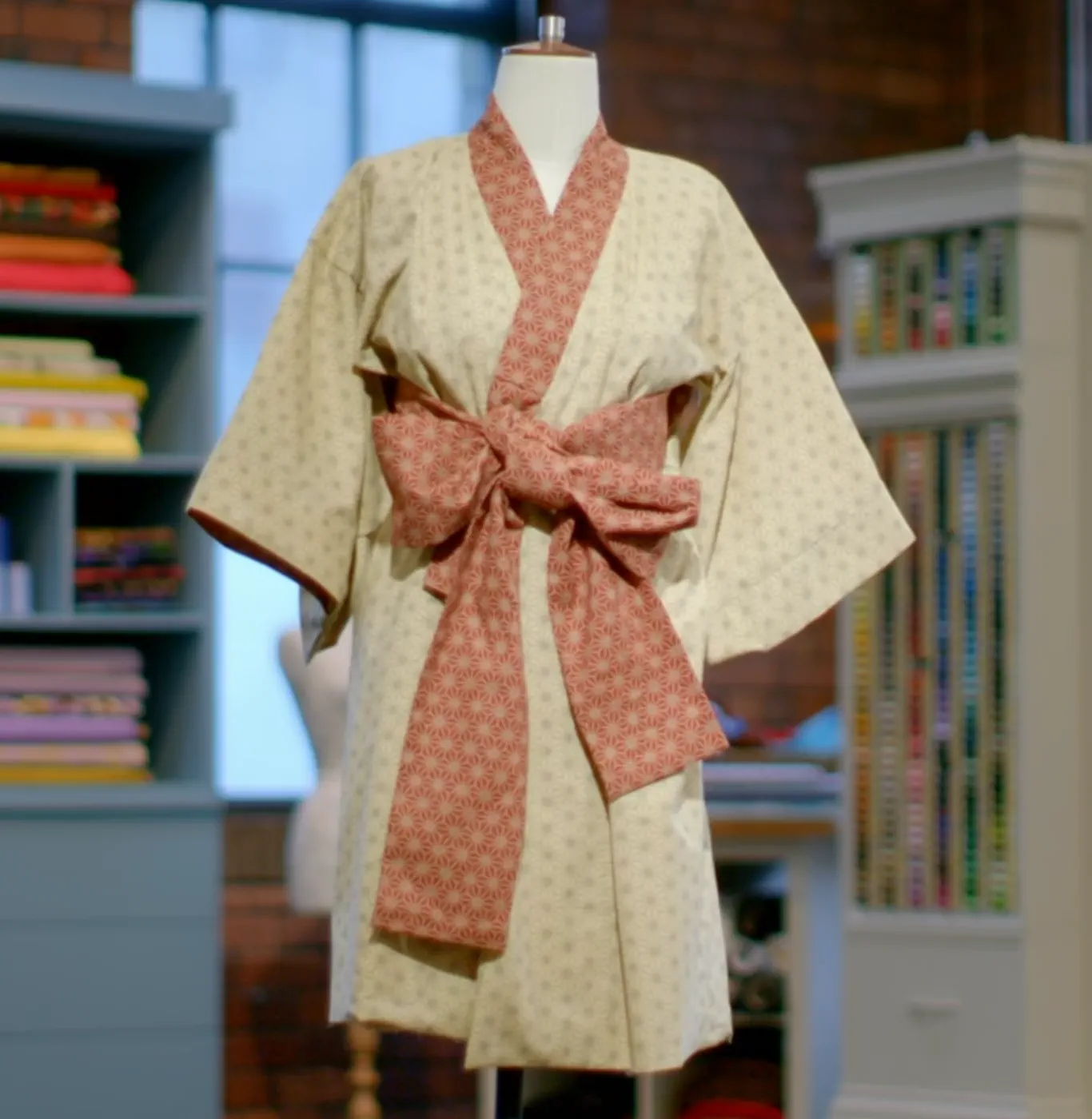
In the eighth season of The Great British Sewing Bee, 2022, actress and comedian Sara Pascoe hosts and Savile Row's Patrick Grant and fashion designer Esme Young of Central Saint Martins, judge the contestants. We learn that Sara Pascoe's husband has over 200 pairs of trainers, and that Esme's father captained the Wasps rugby football team, she made the shirts worn by Leonardo DiCaprio in Baz Luhrmann's movie Romeo and Juliet, she once dressed up as Dolly Parton and is friends with English rock singer Bette Bright. We also learned that most of the parties Patrick attends are "parties for one"!
Historical details were provided by fashion historian Amber Butchart, art critic Bonnie Greer OBE, Professor Miki Sugiura, Loretta Pettway Bennett, Bonnie Greer, fashion historian Keith Lodwick
Pattern Challenges
Week 1 - Wool Mini Skirt
Contestants have 2 hours 45 to create a woollen mini skirt with two patch pockets, with piping around the edge. In the 1950s Yorkshire provided the finest cloth for Savile Row tailors and prestigious fashion houses across the world. The pattern starts with sewing the pockets - edged with piping and attached to the front piece. The zip is inserted in the back and side seams sewn. Facing is applied at the top of the waist, concealing the raw edges. Finally it is hemmed and pressed.
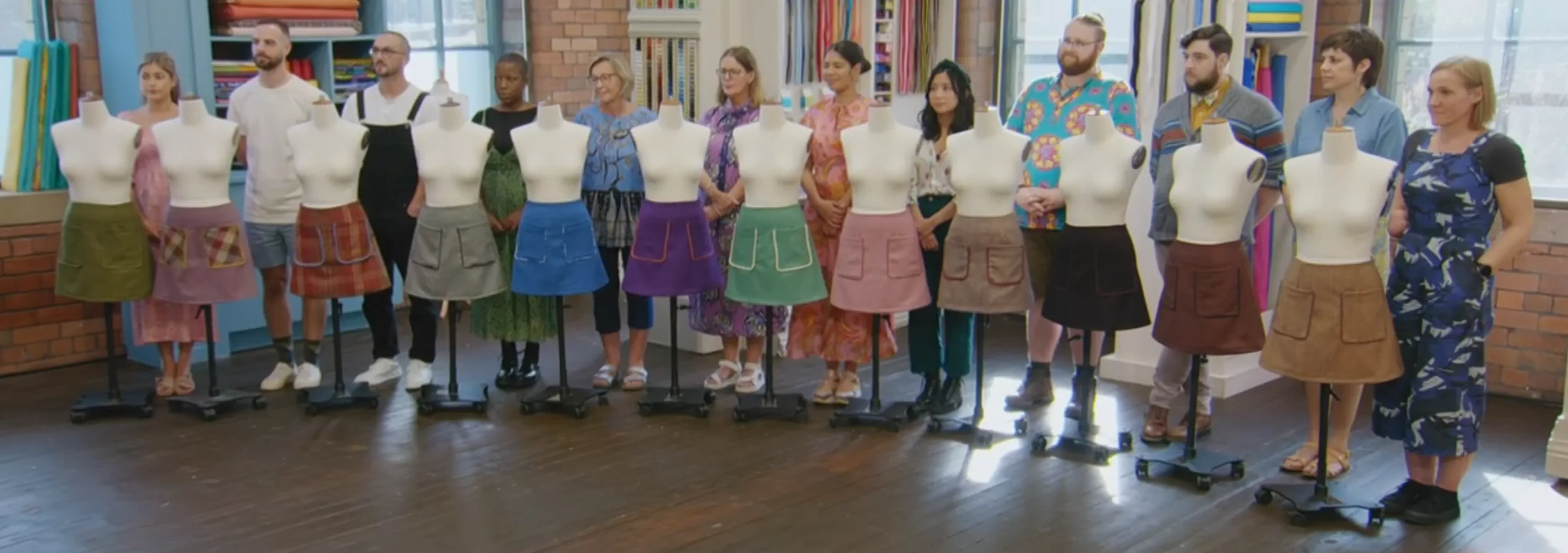
Mitch came last. Angela won.
Week 2 - Sports Week - High Top Trainers
Four hours to make a pair of high top trainers, using pre-made sole units. The high top uppers are constructed on the flat, the two sides and the tongue are each attached to their lining. The sides are joined at the back with the heel piece and loop. A toe piece is added to the front of the tongue, 14 eyelets are punched into each trainer, 7 on each side. Finally the uppers are hand-stitched to the sole and the laces threaded.
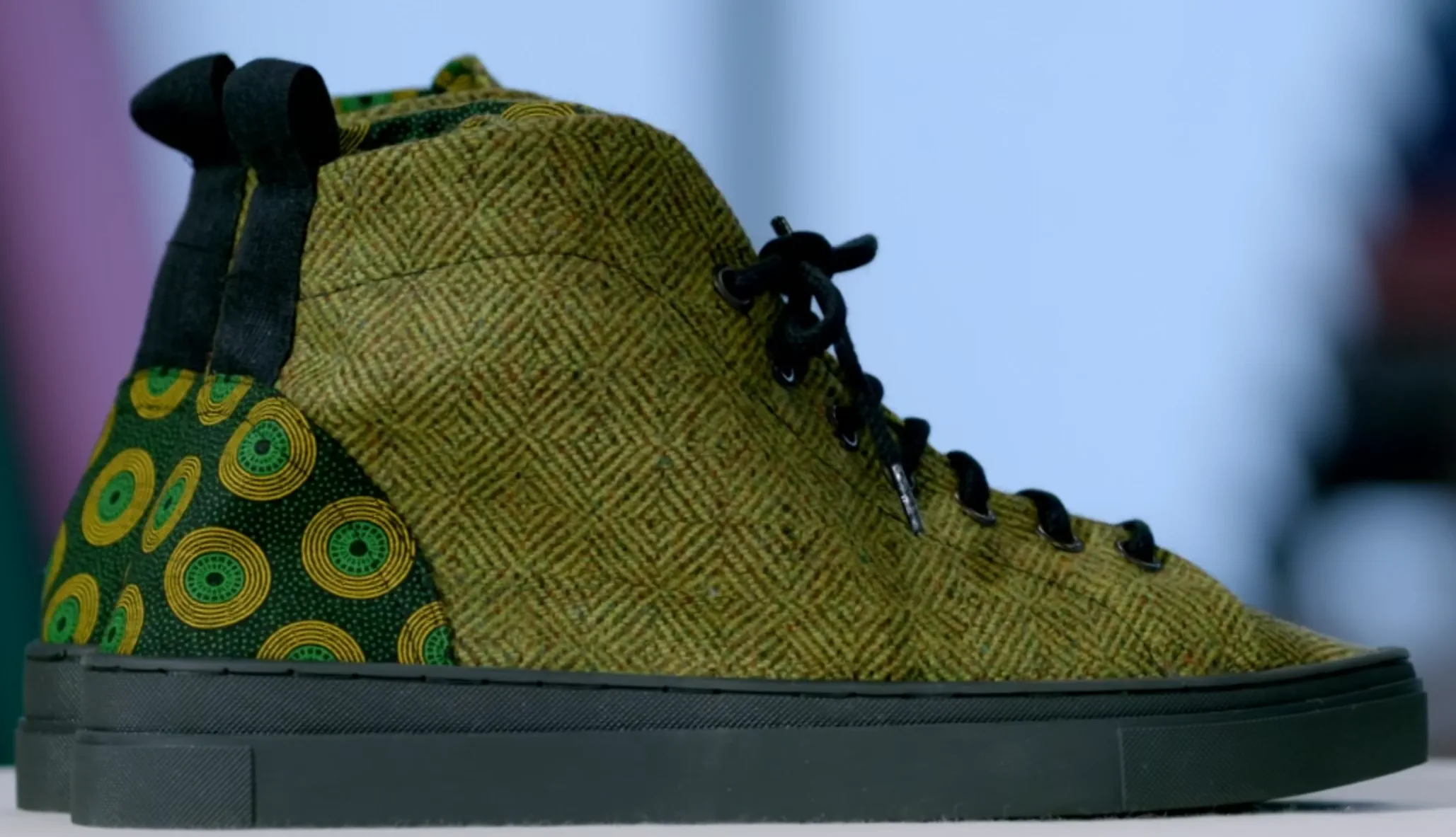
Angela came last. Man Yee won.
Week 3 - Summer Week - Shirred Midi Dress
Contestants have 3 hours 30 to make a shirred midi dress in a summer weight fabric. Fabric needs to be easily gathered. Shirring is when elastic is sewn into the garment to gather the fabric and give it stretch. It is important to get the rows of shirring parallel and evenly spaced, with tension while sewing being critically important. The style is from the late 1700s when Marie Antoinette popularised it, a famous 1783 portrait of her in this style appeared in Le Louvre.
The pattern starts with front and back bodice pieces each being gathered with 15 parallel lines of shirring. The bodice is then sewn together at the side seams. The front and back skirt pieces are joined and gathered and elastic inserted at the waist and attached to the bodice. The sleeves are shirred at the cuffs and elastic enclosed at the shoulder and attached to the bodice.

Steve came last with an unfinished garment. Brogan won.
Week 4 - Reduce, Reuse, Recycle Week - Quilted Patchwork Jacket
The contestants have 4 hours and 15 minutes to select 96 squares of scrap fabric and make a quilted jacket. The squares of fabric are sewn together to create four large pieces, each sized as 4x6 squares, from which the two front pieces and two sleeves are cut out. Wadding is then sandwiched between these pieces and a lining fabric, and top stitched to create the quilting. The front is then joined to the back and the sleeves are inserted before all the raw seams are encased with bias binding. The sewers must select and arrange squares that will form a cohesive look once they are sewn together.
Contestants struggled to lay out the arrangement of squares before sewing, and also in sewing them according to their designs.
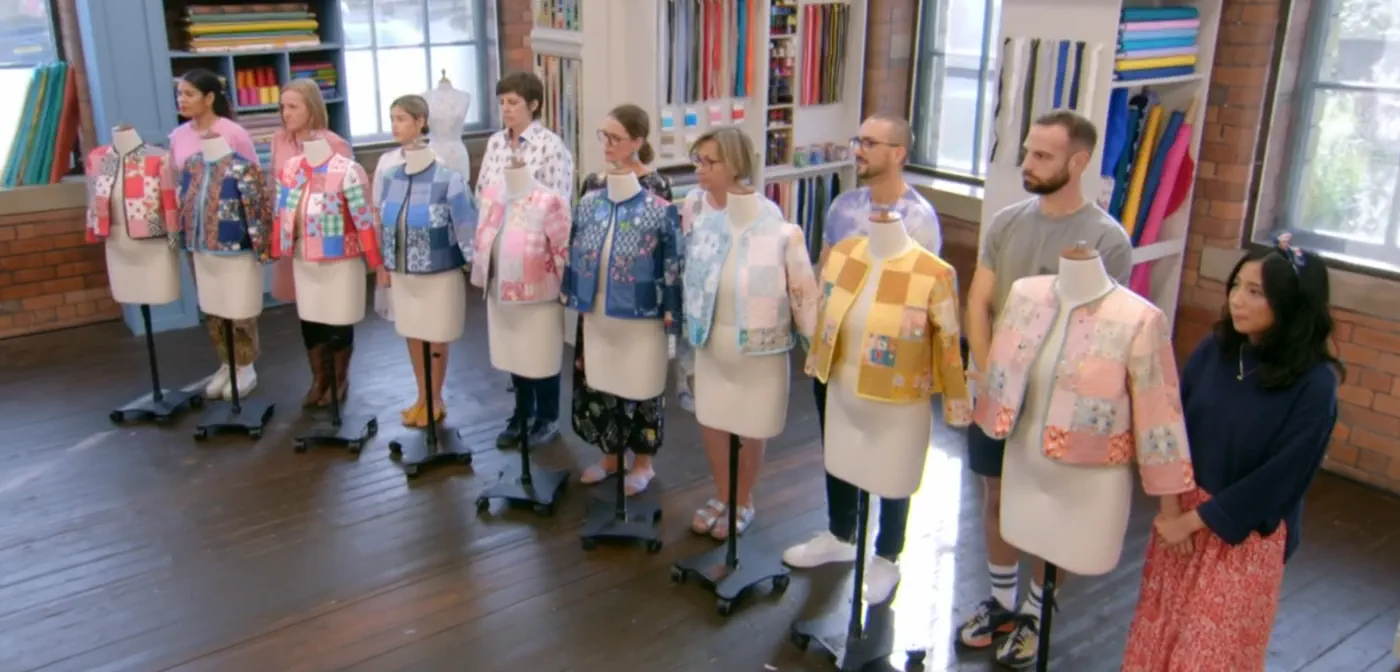
Steve was last. Debra won.
Week 5 - Children's Week - Mini Sailor Suit
The contestants have 3 hours 45 to make a child's sailor suit in two pieces, trousers with an elasticated waist, and a top with a classic square sailor collar. The fabric used should be lightweight but tough enough to survive energetic play, with contrasting material for the ties and a contrasting trim for the collar. The sailor suit with its square collar dates to 1830 and was first made available as a child's outfit in 1836, with Queen Victoria dressing her son Bertie, who became Edward VII, in a sailor suit. The judges are looking for neat, even trim with good right angles on the collar and good choice of fabric that will hold the turnups on the shorts, and elastic waist that forms a good fit.
The pattern starts with the shorts, with two pieces joined at the front and back seams and along the inside leg. They are hemmed and turned up and elastic inserted at the waistband. The top begins with the ties that sewn inside out and pulled through, and sandwiched between the front and back at the shoulders and overlocked into place. The sleeves are inserted and two rows of ribbon are added to the cuffs. The top is joined together along the undersleeves and side seams. For the square collar two parallel rows of ribbon are attached and it is joined to the neckline. The ties are stitched down and finally three snap fastenings are added and the ties are tied.
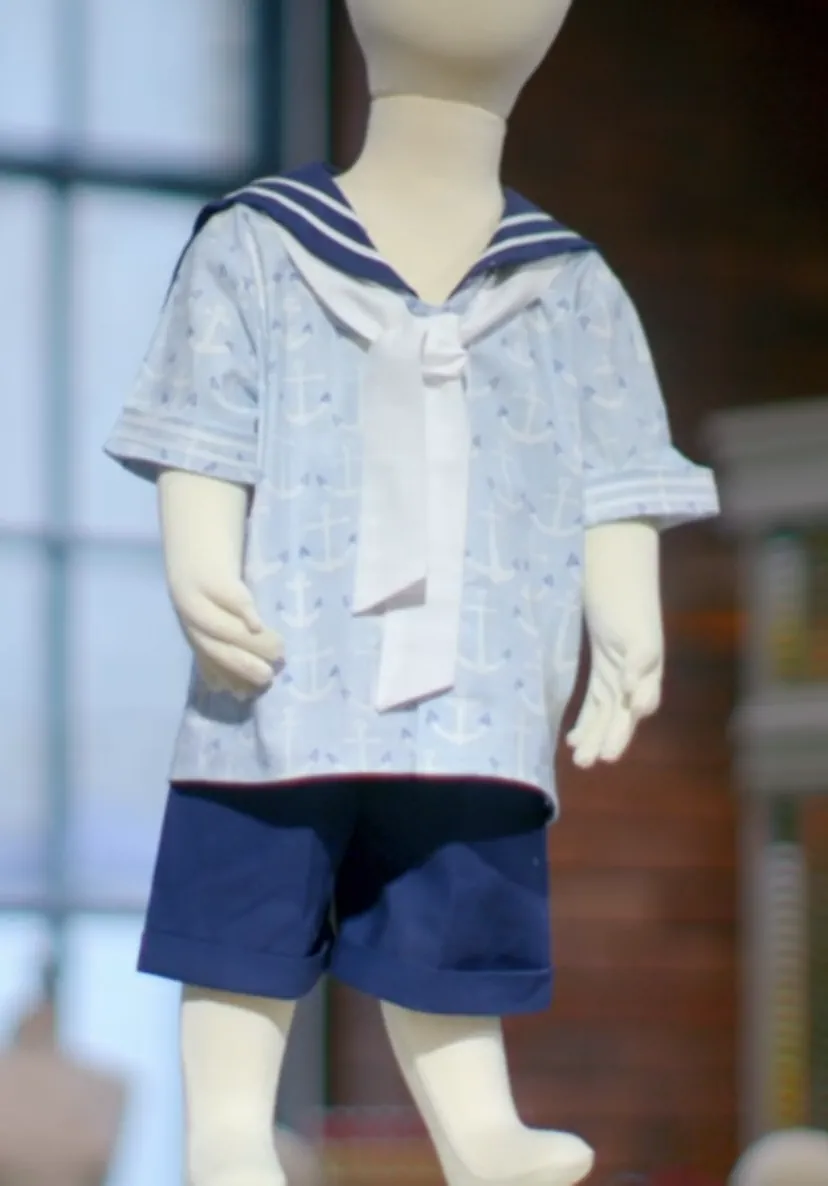
Annie came last. Man Yee won.
Week 6 - Music Week - Parka
Contestants have 4 hours 30 to make a parka. The parka is linked to the Mods in the 1960s; it protected the sharp suits worn by Mods in that era, but its history dates thousands of years, created by indigenous Arctic peoples, made from caribou or seal skin. It was adopted in the 1950s by the US military which introduced the fishtail (a split hem at the rear with a drawstring) so each side could be tied around the legs to create extra insulation and warmth. In the 1960s army surplus stores were full of US army fishtail parkas left over from the Korean war and were adopted by the Mods.
The iconic features of a parka include the fishtail back, cord drawstrings with stoppers at the waist, a hood and a placket to prevent water getting in through the complex zip construction with many layers.
The judges are looking for a hard-wearing and weatherproof fabric, precision, e.g. drawstring channels and pockets being lined up. "It may be one of the hardest pattern challenges we've ever set" claimed Patrick Grant.
The parka's construction starts with two pockets sewn to the fronts, these are joined to the two back pieces and a waist channel created. A three piece hood is created and joined at the neckline. A zip with a zip guard is attached, and a second draw cord channel added to the hem. The sleeves are inserted and waist cords threaded, the front placket is sewn, covering the zip, and a popper punched in at the neck to hold the placket in place.
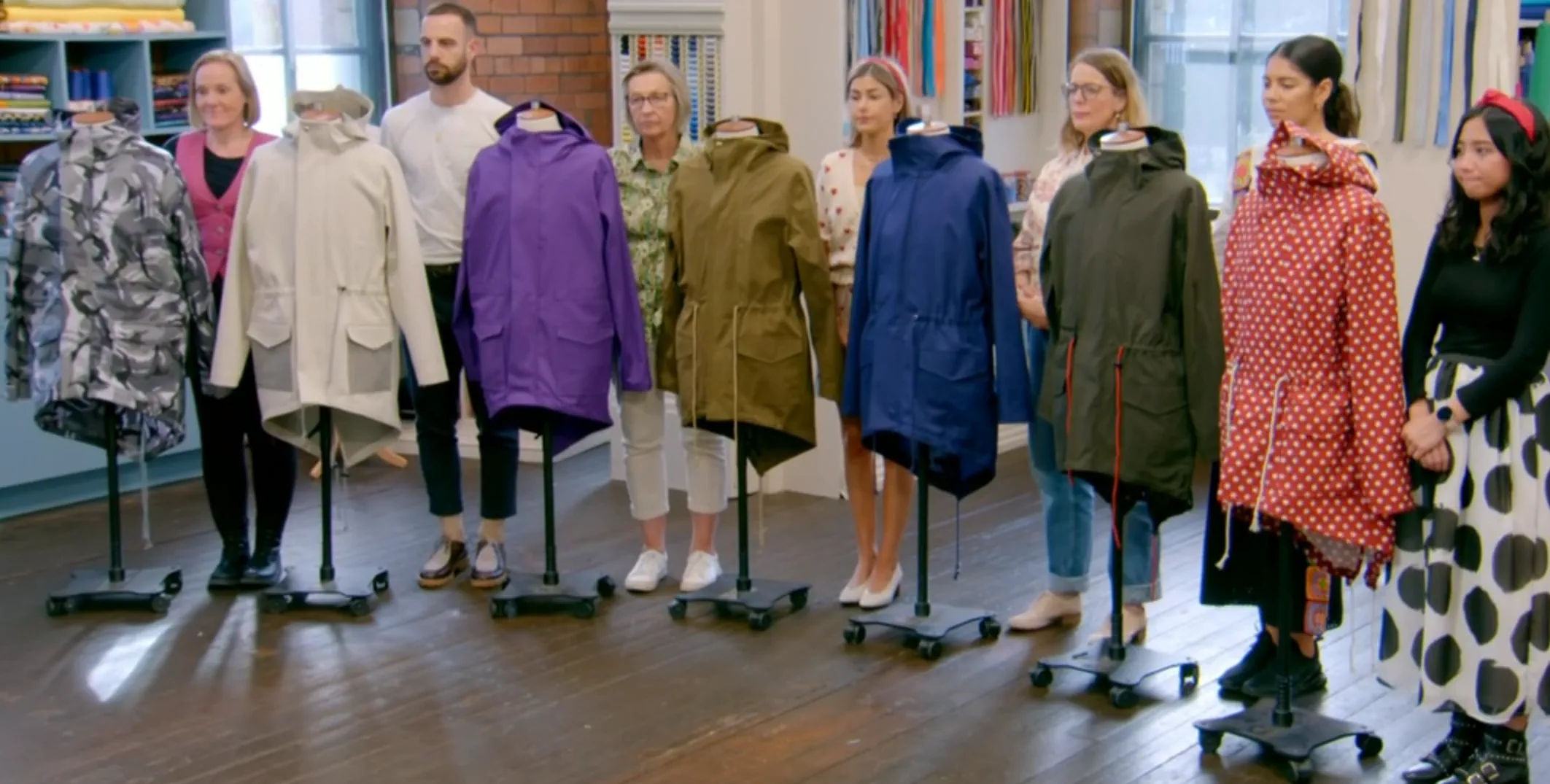

Gill came last with a poor fabric choice meaning several steps were difficult to accomplish, Brogan won.
Week 7 - Lingerie and sleepwear week - Lace bra and knickers
The contestants have 3 hours 45 minutes to construct a lace bra and knicker set.
Starting with the knickers, the gusset is inserted, the sides are sewn up and the elastic is added to the legs. In the bra, the lace front and the side cups are lined with power mesh and sewn together with the top edge to form the bra cups. They are attached to the underband which is then inserted with the underwire. Elastic is sewn onto the bra edges, the straps are added and it's finished with a hook and eye tape.
Week 8 - 1930s Week - 1930s Sailor's Trousers (for a woman)
Contestants have four hours to make a pair of 1930s style sailor's trousers for a woman, with a front bid opening, considered scandalous at the time. The fabric needs to be firm enough to give structure, but too thick a fabric could make the trousers look bulky.
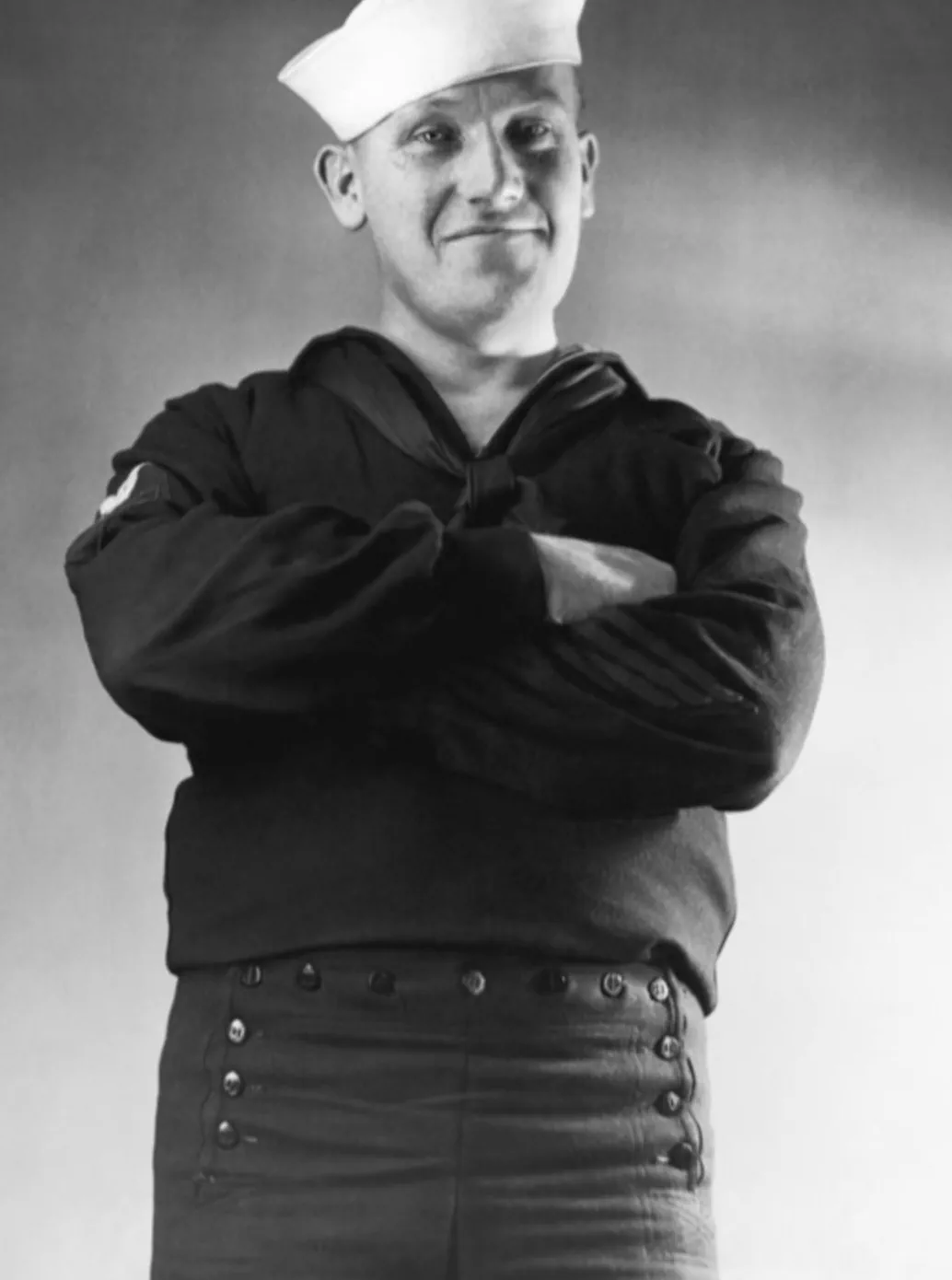

The construction of the trousers is complex. Underneath the front flap are two overlapping pieces with pockets inserted into both. To construct the trousers the front legs are first joined at the crotch. Slits are cut at each side to create the bib opening, pocket bags are inserted, the front leg pieces then joined to the back pieces, and the waistband is attached. Buttons and buttonholes are added, and finally, hems are turned up to complete the jaunty sailor look. The pocket pieces are cut with the right side of the fabric facing up. Facing is attached to the top pockets to enclose the edge. The top and under pocket pieces are stitched together. They are then folded over and overlocked to form the pocket bags, then attached to the front of the trousers. Finally they are folded inwards to sit neatly behind the bib.

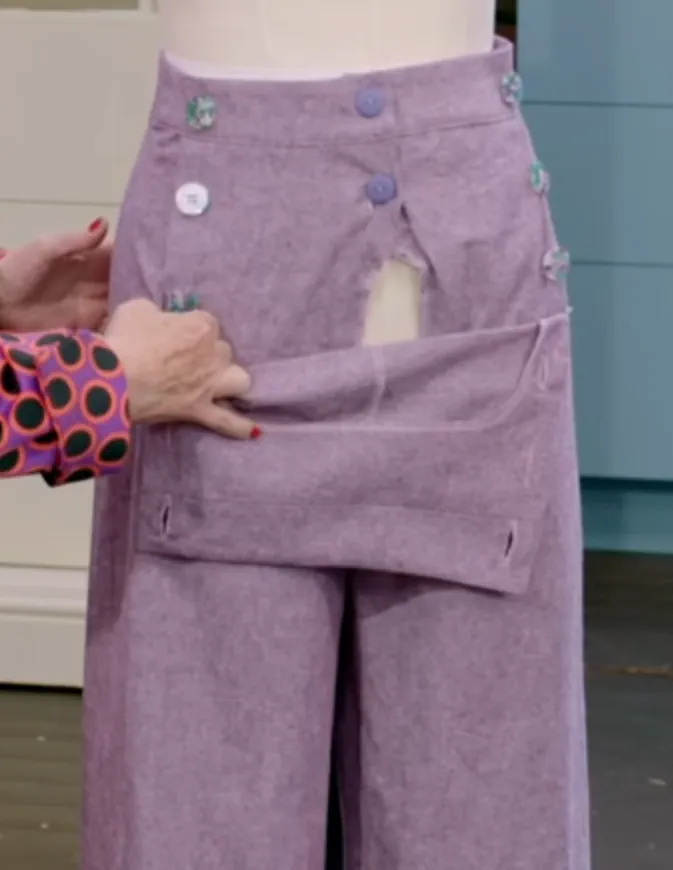
Annie came last. Man Yee won.
Week 9 - Japan Week - Kimono-Inspired Dress
Esme Young teamed up with Japanese designer Wakoko, to design a kimono-inspired dress. The contestants have five hours to make the dress from a pattern, and have access to lots of Japanese-inspired fabrics from which they must two. Kimonos have been globally influential. This pattern has traditional elements such as rectangular sleeves, a collar which stands away at the back of the neck, while the traditional obi belt has been replaced with a large front bow.
Long pattern pieces are a feature of traditional kimonos. The dress is formed from just two very long pieces sewn together down the back seam. Next, panels are added to create a wrap front, the collar band is attached. Sleeves are joined at the shoulder. Side seams sewn leaving hole both for the belt and for bagging out (bottom of centre back). Then the lining is made, belt and ties are attached and its sewn to the outer layer, leaving a small hole for bagging out the entire garment. The hole is hand stitched shut and the bow is tied.

Annie won, Debra was last.
Week 10 - The Final - Party Clothes Week - Amorphous Dress
Contestants have 2 hours 30 to make the Amorphous Dress, requiring stretch fabric and 10x D Rings. It was designed in 1977 by Esme Young and the Swanky Modes Gang (Judy Dewsbury, Melanie Herberfield, Willie Walters and Esme Young) and the original, made from Lycra in 1983, is in the V&A Museum. Cher bought one and it was also worn by Linda Kozlowski in the movie Crocodile Dundee and modelled in Paris by Bette Bright, a singer. It is called amorphous as it is an unusual shape when laid out flat and it is difficult to see what it looks like until it is worn. It is kept fastened by D rings only. The dress is formed from just one piece of fabric which is joined at the shoulder seam. Next, binding is applied around the armhole, one dart is sewn, and the edges are reinforced with an overlocker stitch. The six ties are then neatened and given mitred, pointy, corners. The curved edges are hemmed and finally D rings are added and the ties secure the whole dress around the body, morphing it into the Amorphous Dress.
Debra won, Man Yee second, Brogan came last.
Transformation Challenges
Week 1 - Loungewear into a glamorous going-out top
Contestants have 90 minutes to transform loungewear into a going-out top.
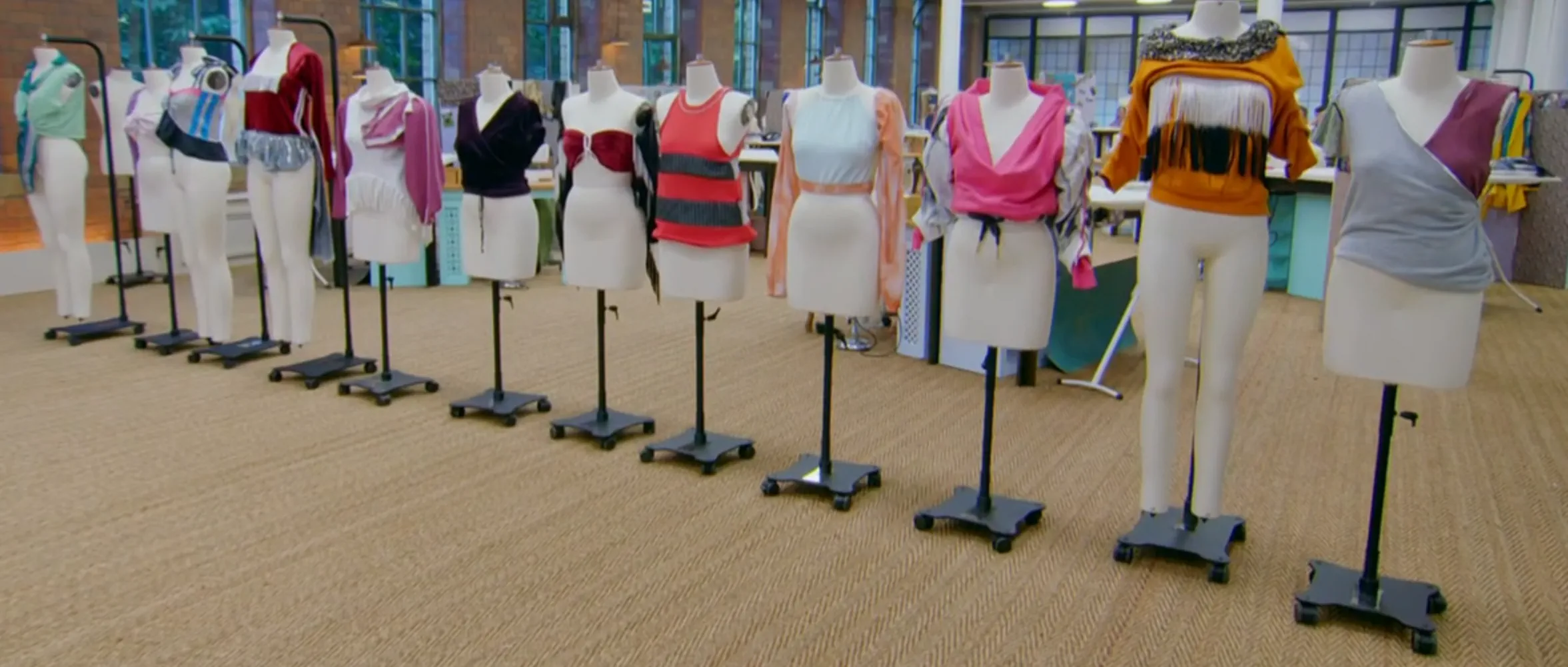
Week 2 - Netball outfit into a glamorous daytime garment
Contestants are given pleated netball skirts, sports tops and netball bibs with which to make a glamorous daytime garment in 90 minutes.

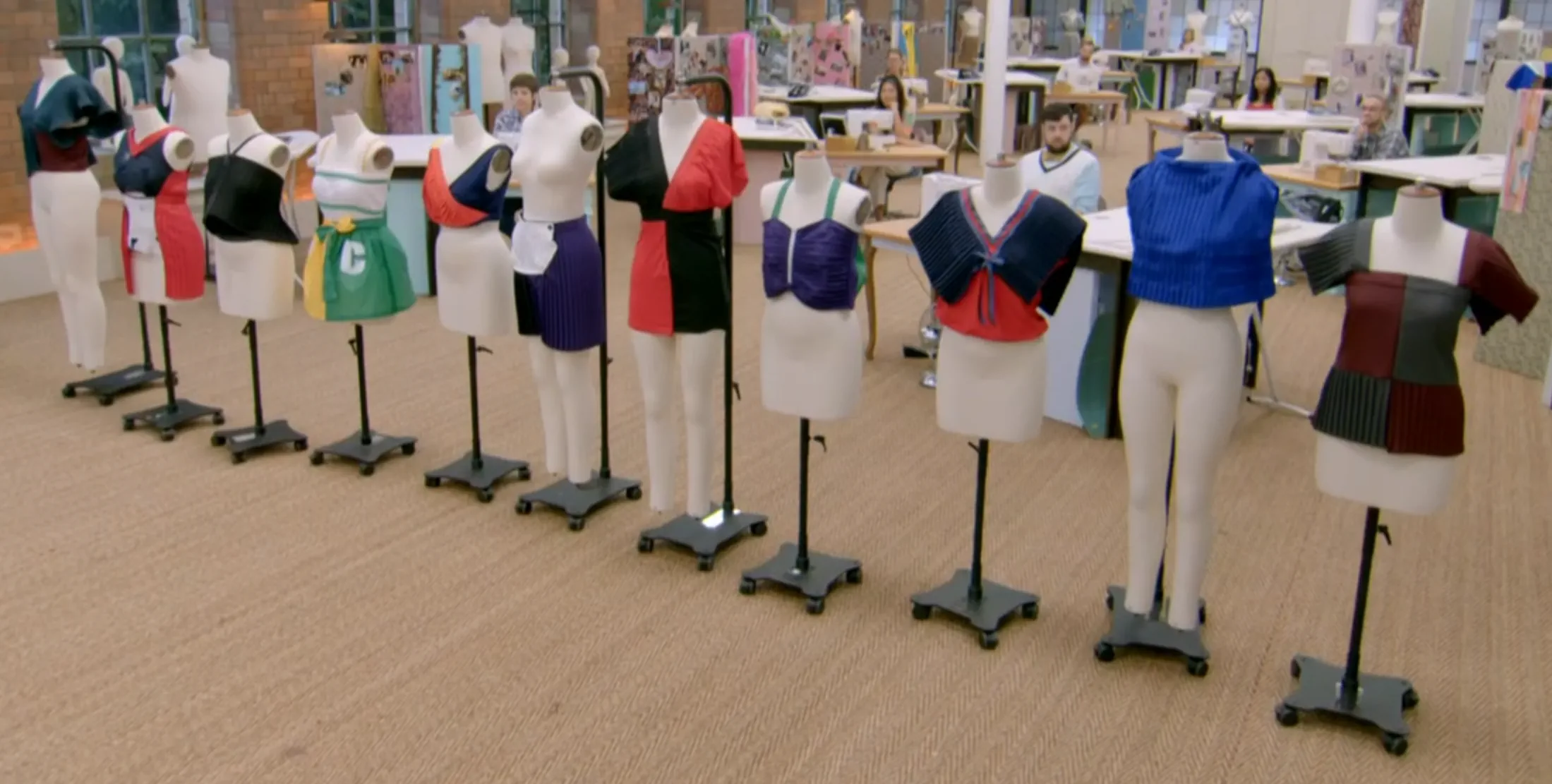
Annie was last. Brogan won.
Week 3 - Hammocks into an adult's summer garment
Contestants have 90 minutes to transform a hammock plus fringing rope and macramé into an adult's summer garment.
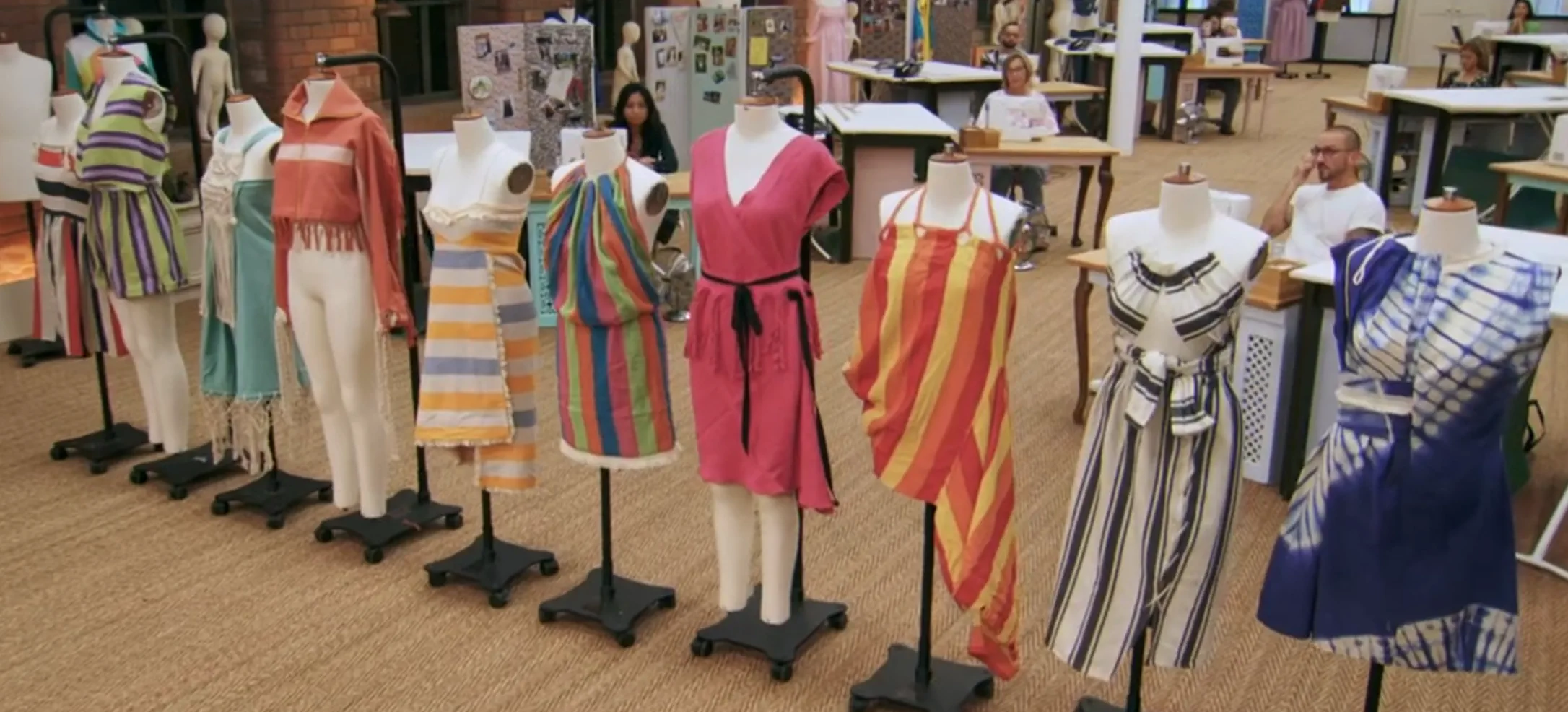
Steve was last. Angela won.
Week 4 - Two Overcoats into a Stylish, Wearable Coat
Contestants have 90 minutes to transform two second-hand overcoats into a new, stylish coat. The judges are looking for the contestants to re-use original elements from the coats, such as buttons, collars and pockets, to form a brand-new garment that is wearable. They are looking for a clear plan.
Debra was last. Man Yee won.
Week 5 - School Uniform into Cool Outfit for a Six Year Old
The contestants have 90 minutes to turn old school uniforms into a cool garment for a six year old to wear outside of school. The judges want the outfits to be anything but uniform.
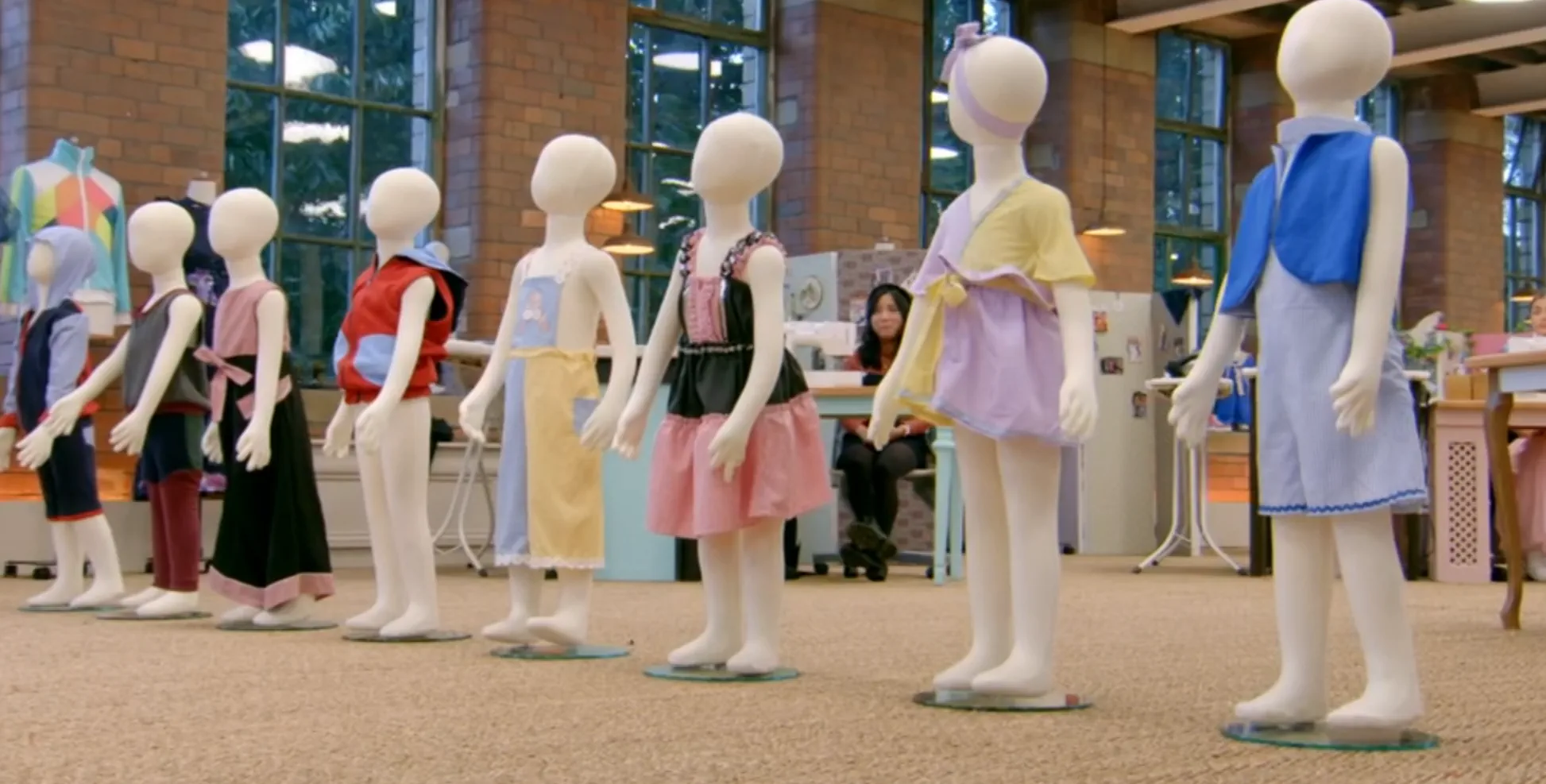

Gill came last. Angela won.
Week 6 - Denim into a stage outfit for a country music star
Contestants have 90 minutes to transform old denim and shirts, plus a variety of trims, into an outfit for a country music star. The judges are looking for visual impact at a distance.
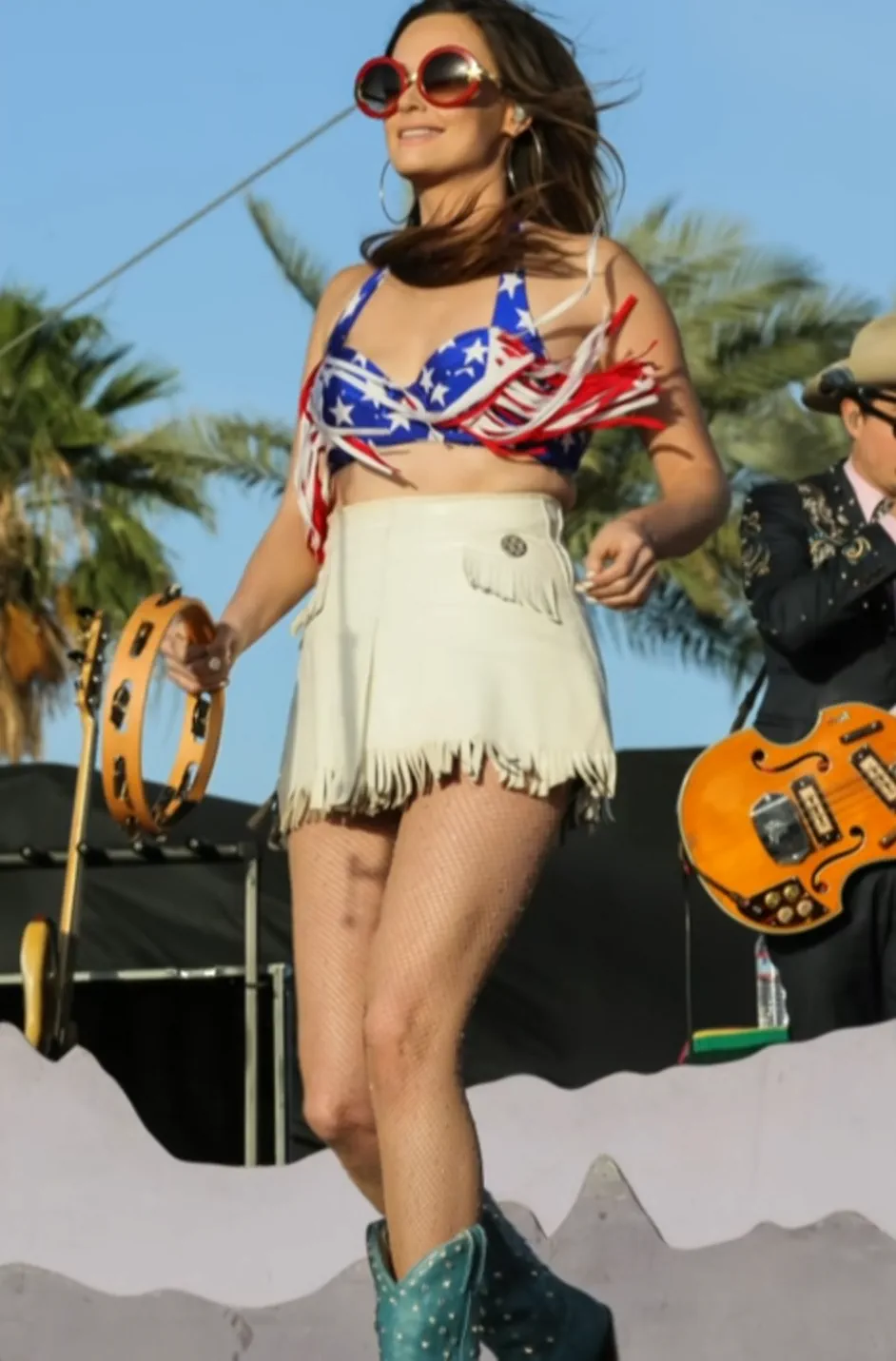

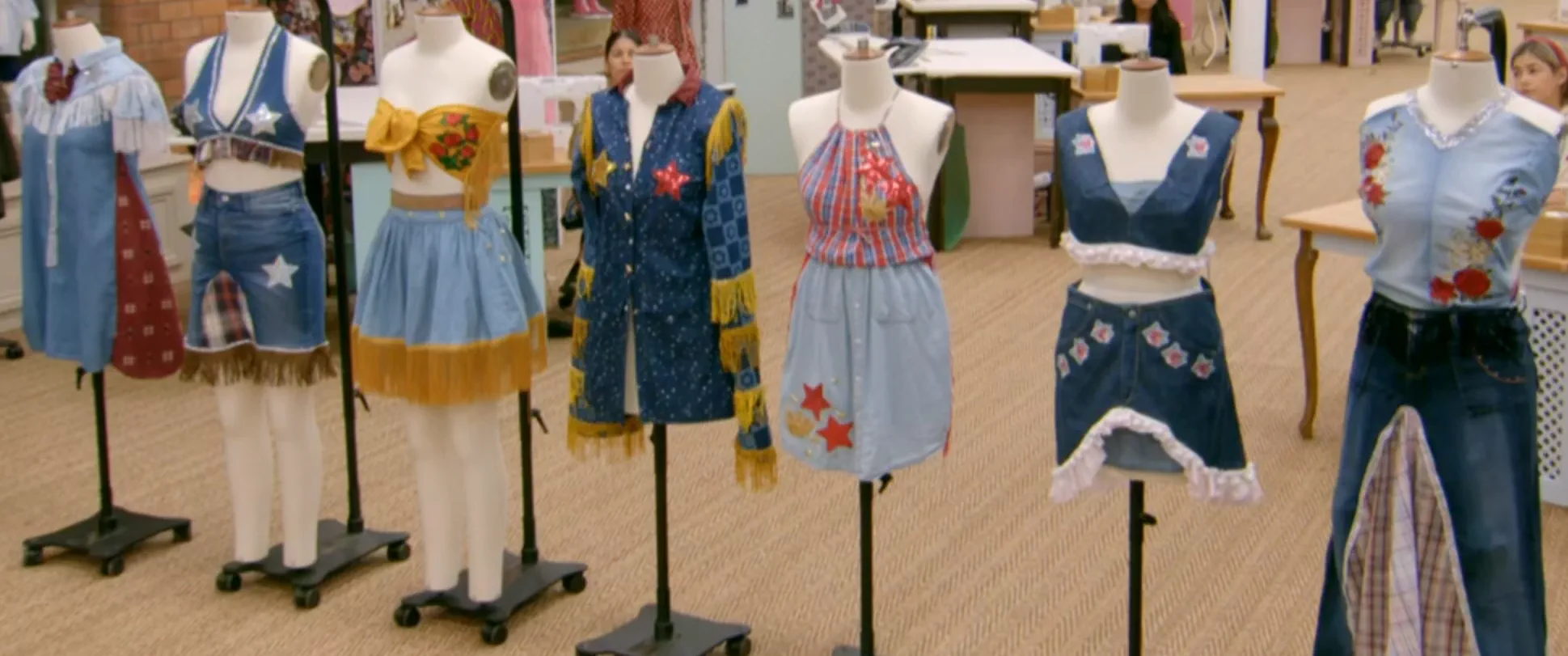
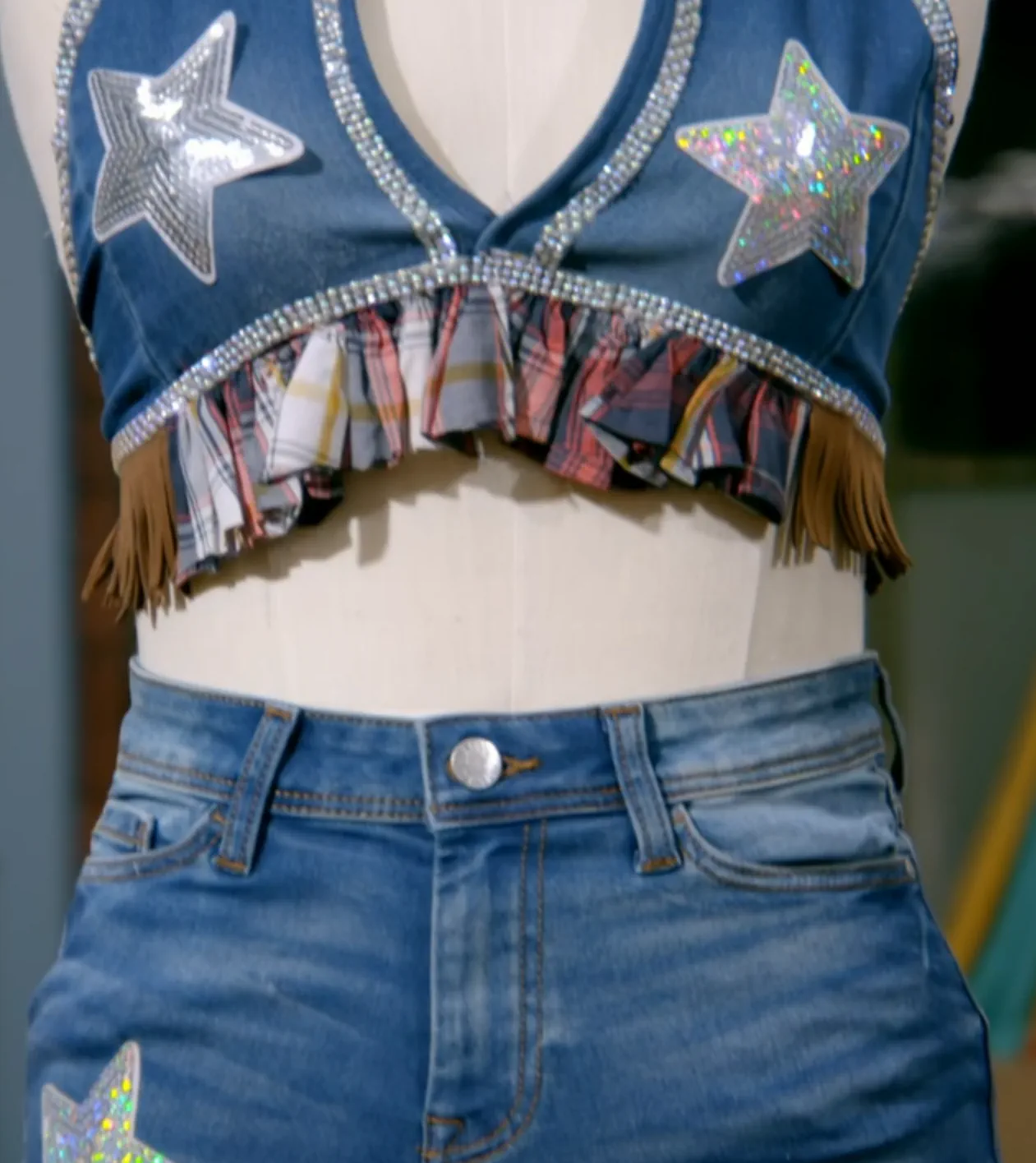
Annie was last. Gill won.
Week 7 - Thermal sleep sets into a garment for going out in
The contestants have 90 minutes to transform one or more pastel coloured thermal sleep sets, plus trims, into a garment for going out in. The judges expect them to be clever to turn the plain fabric into something eye-catching, and to use the right trim in the right way so that it looks part of the garment.

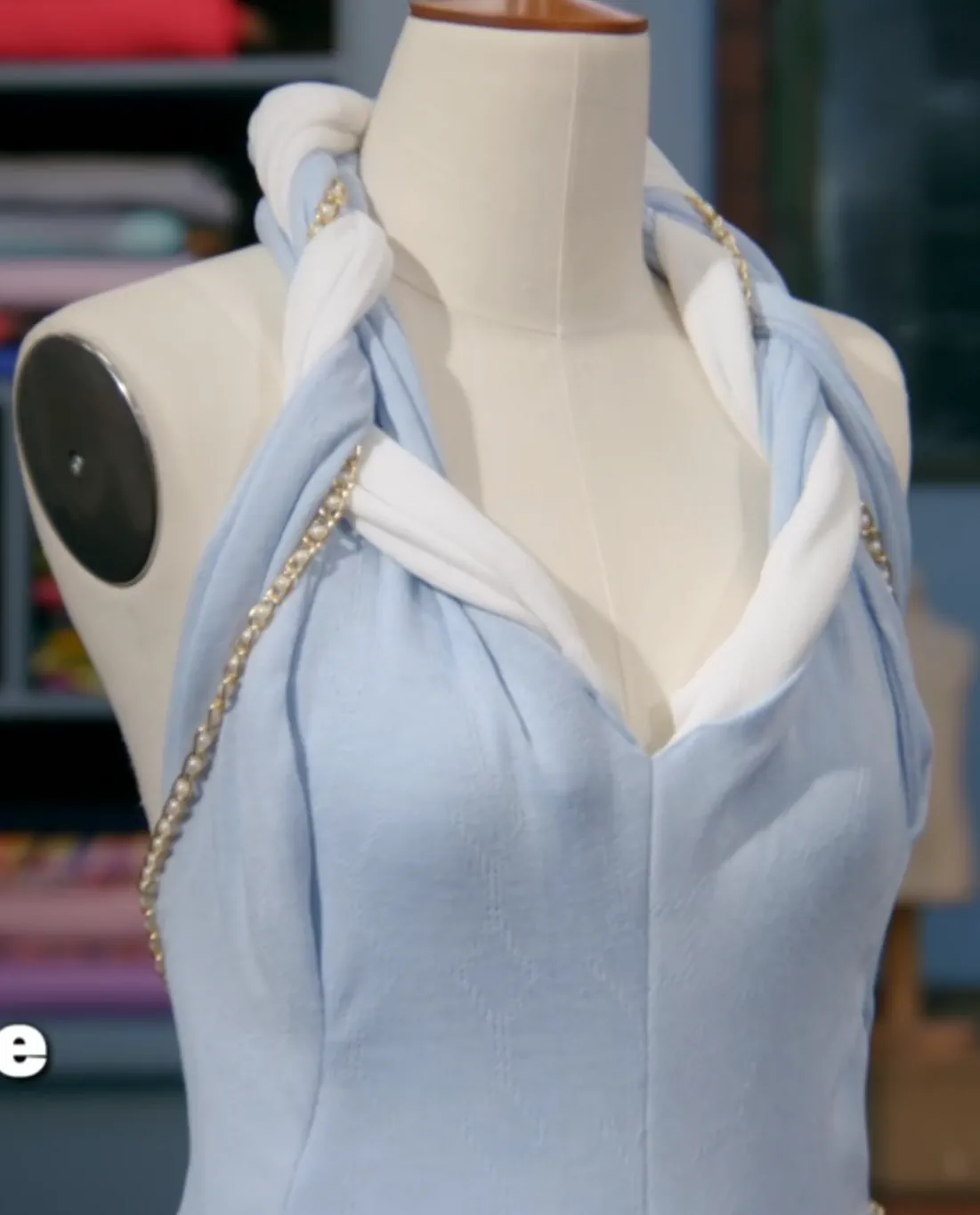
Debra won, Annie second and Gill came last.
Week 8 - Second-hand men's shirts transformed into a woman's 1930's blouse
Contestants have 90 minutes to transform one or more men's shirts into a 1930's style woman's blouse. They have been given a selection of shirts and a number of vintage adverts for women's blouses for inspiration. The blouse of that era had a defined waist, a statement sleeve, a lot of geometry, detail around the neck, such as bows or ties.
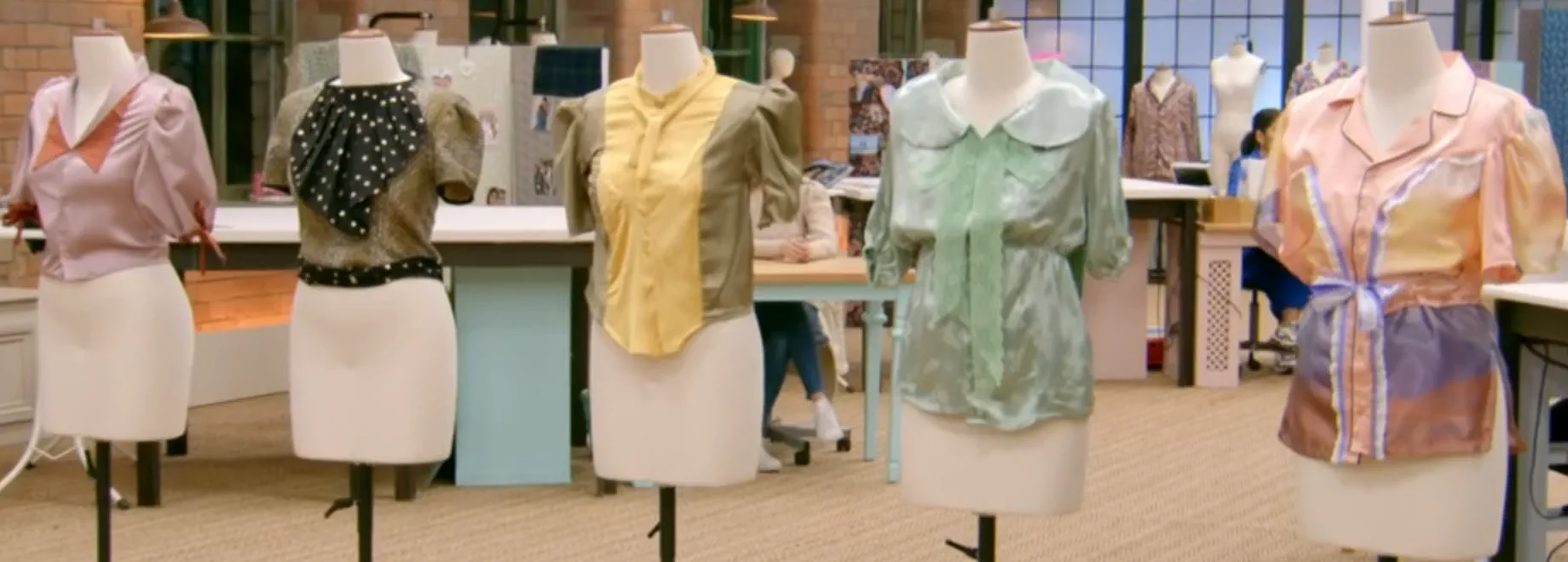


May Yee won, with Debra second. Brogan came last.
Week 9 - Repair and Decoration of Ripped Denim using Sashiko
Contestants have 90 minutes to repair and decorate a single, ripped denim garment using the Japanese Sashiko technique.
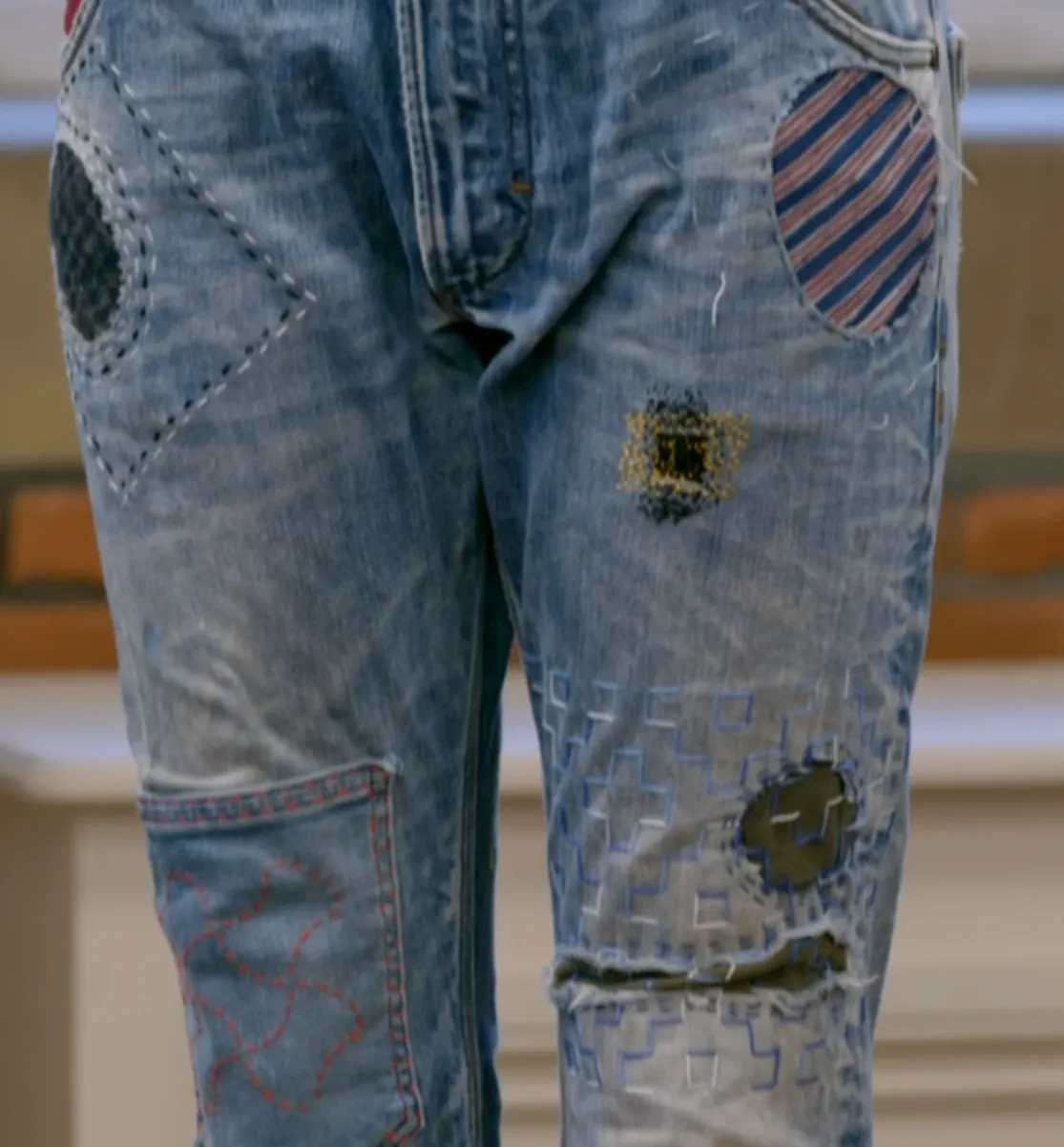

Man Yee won, Annie second. Debra came last.
Week 10 - Party Outfit from Scrap Fabric
The contestants have 90 minutes to make a party outfit for themselves, using fabric offcuts from the previous weeks.
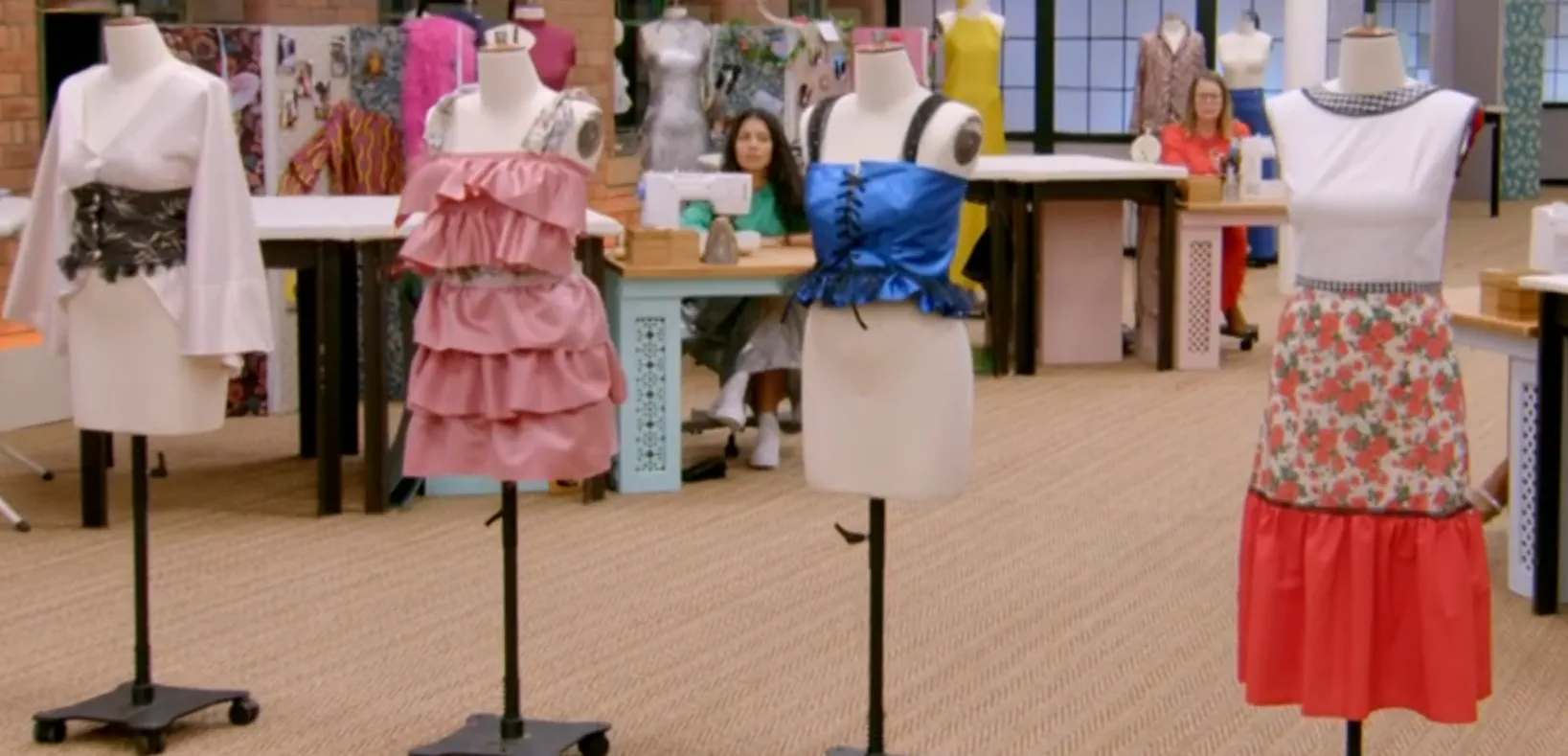
Man Yee won, Annie came second, and Brogan last.
Made-to-Measure Challenges
Week 1 - Made-to-measure Wrap Dress
A wrap dress (in 5 hrs) as popularised by Belgian designer Diane von Fürstenberg in the 1970's (garment of the week from Debra).
Week 2 - Made-to-measure Sports Jacket Inspired by a Sporting Hero
Contestants have 5 hours to make a sports jacket inspired by a sports personality they admire. Judges are looking for a functional garment allowing the movement required by the chosen sport, probably with stretch fabric.
Marni won garment of the week. Chichi was sent home.
Week 3 - Made-to-measure Trousered Co-Ord
Contestants have five hours to make a made-to-measure trousered co-ord for their live models. The judges are looking for something chic that looks airy and summery, a design with imagination, good choice of fabric and well-made.
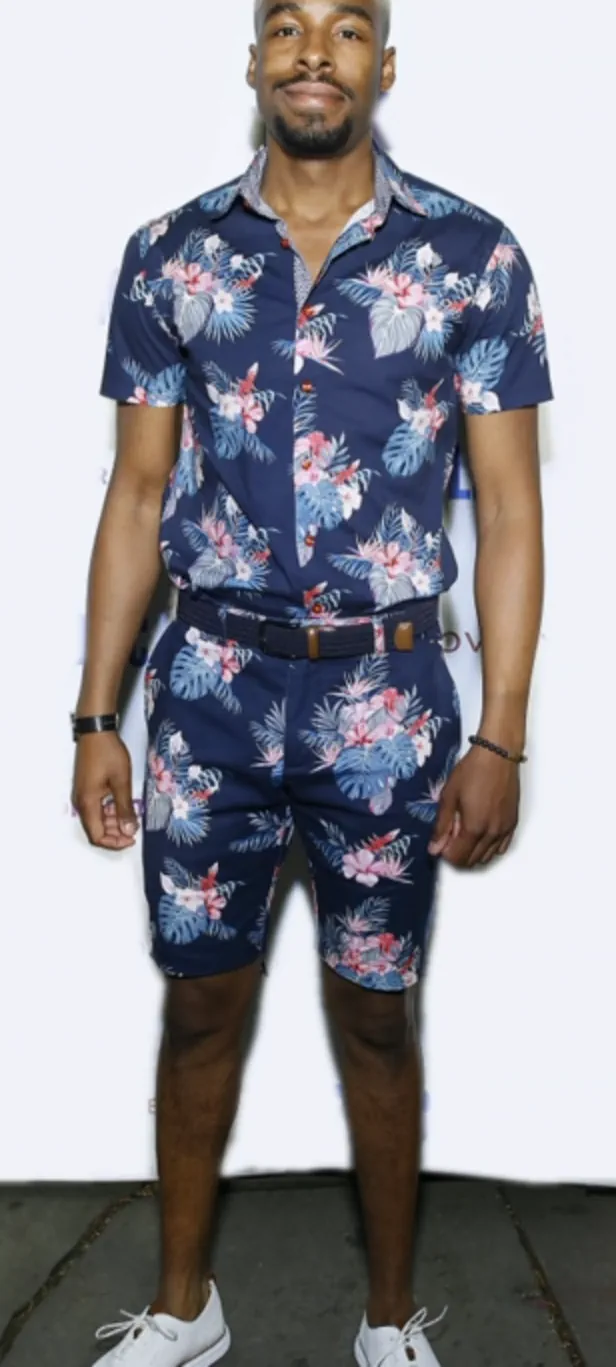



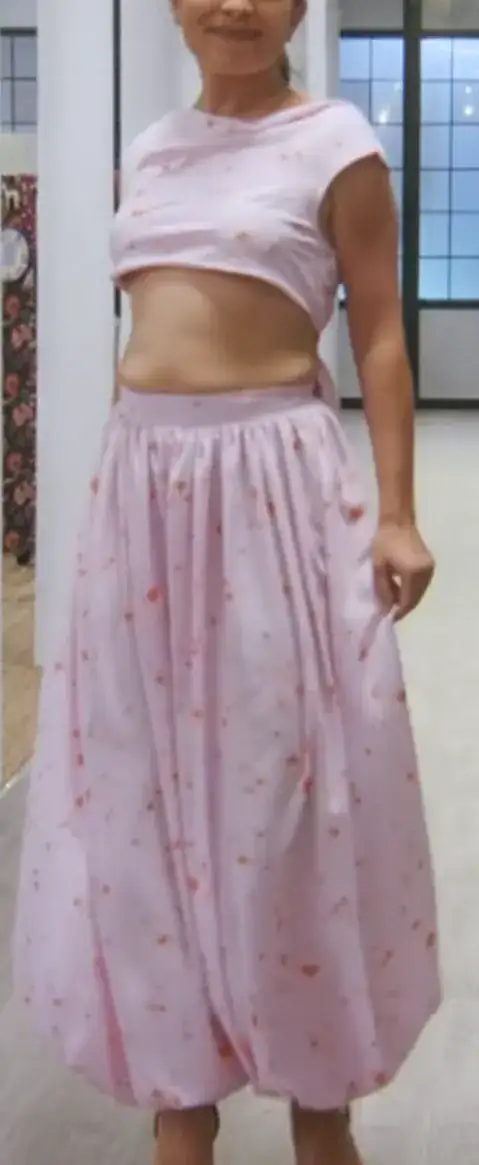



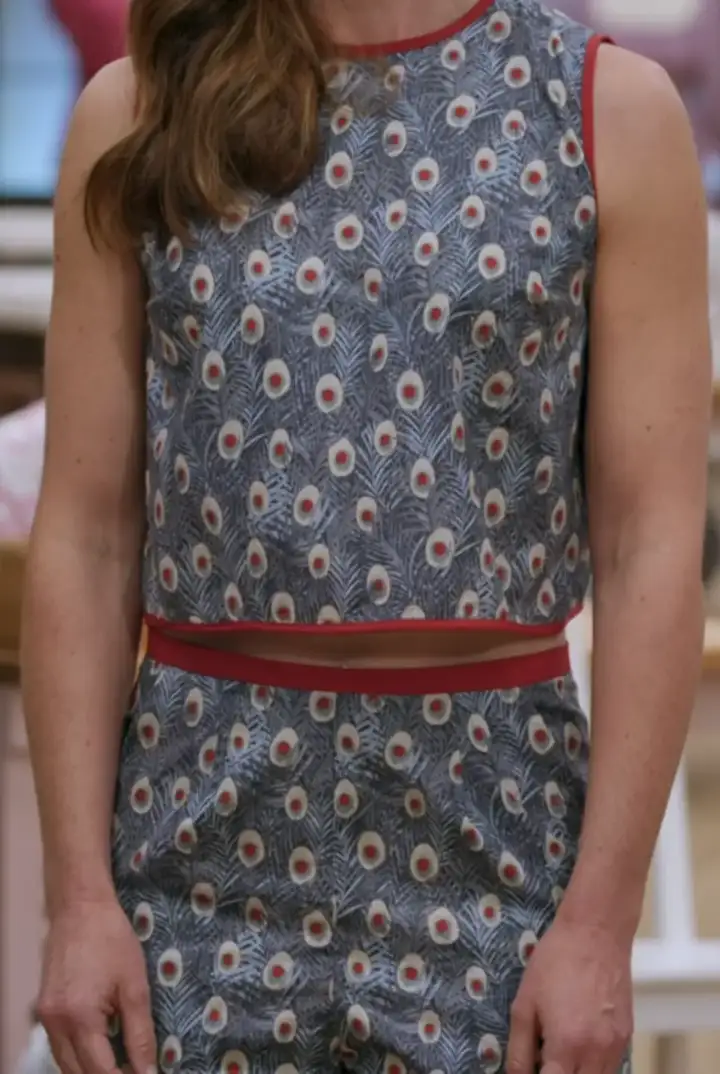
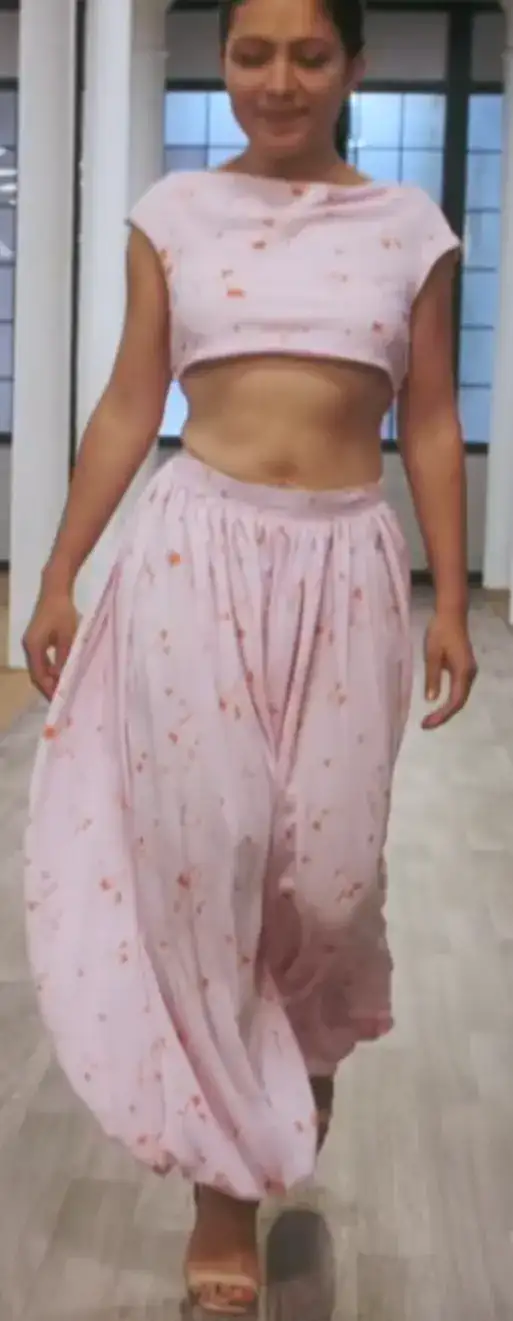
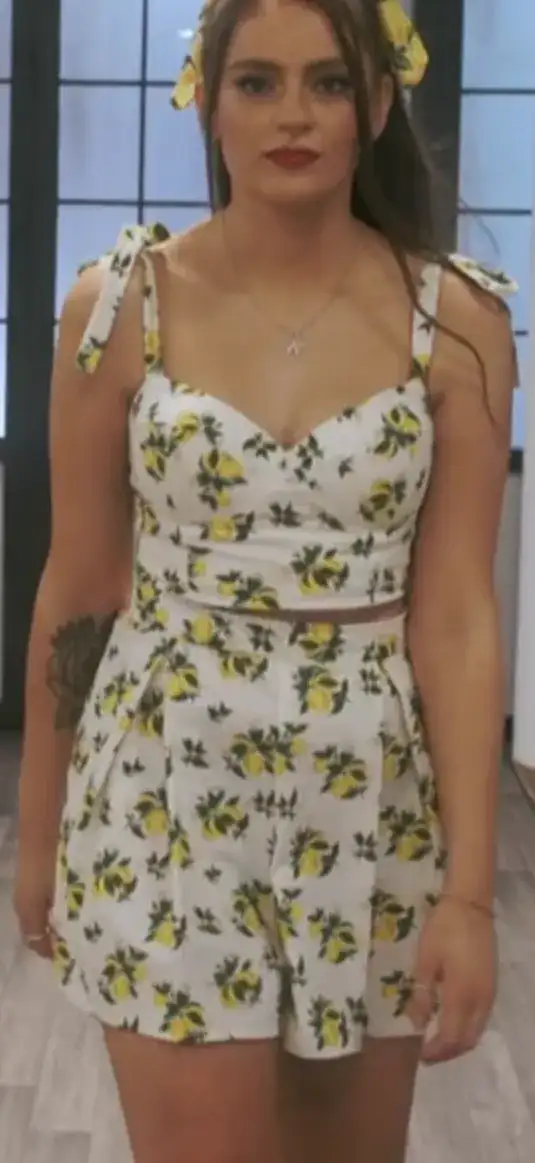



Debra won garment of the week. Richy was sent home, having failed to practice his made-to-measure and getting the sizing wrong and having a non-functional zip.
Week 4 - Made-to-measure garment made from Duvet Covers
Contestants have 5 hours to make a made-to-measure garment from old duvet covers. The judges are looking for well-executed distribution of pattern and choice of fabric.
Gill won garment of the week. Steve was sent home.
Week 5 - Made-to-measure Halloween Outfit
Contestants have 4 hours to create a Halloween outfit for a 9 year old with a scary 3D element. Judges are looking for something with a sense of humour and the costumes to have a 3D element, and to make sure safety standards are adhered to. They want to be surprised by shapes or colours or something unexpected.

Debra won garment of the week. Marni was sent home.
Week 6 - Made-to-measure David Bowie-inspired outfit
Contestants have 5 hours 30 to make an outfit inspired by the late English musician David Bowie who influenced Art, Music and Fashion during a 50 year career. The judges have chosen him as he was stylistically unequalled and original in every way and clothes and costumes were central to how he performed.
Annie used McCall's M7997 pattern as the basis for her outfit.
Annie won garment of the week. Angela was sent home.
Week 7 - Made-to-measure luxury men's pyjamas
The contestants have 5 hours to make a luxurious pair of men's pyjamas. The judges are looking for a luxurious fabric, with details like contrast piping, French seams, and the design needs to be comfortable.
Man Yee won garment of the week. Gill was sent home.
Week 8 - Made-to-measure bias-cut gown inspired by 1930s Hollywood glamour
The contestants have 5 hours 30 to make a glamorous bias-cut gown inspired by 1930s Hollywood movie stars. Bias cut fabric was used before stretch fabric had been invented, to create dresses that clung to the natural figure of these movie superstars. Every seam needs to be beautifully flat. Every wrinkle and bump will be highly visible when lustrous fabrics are used.
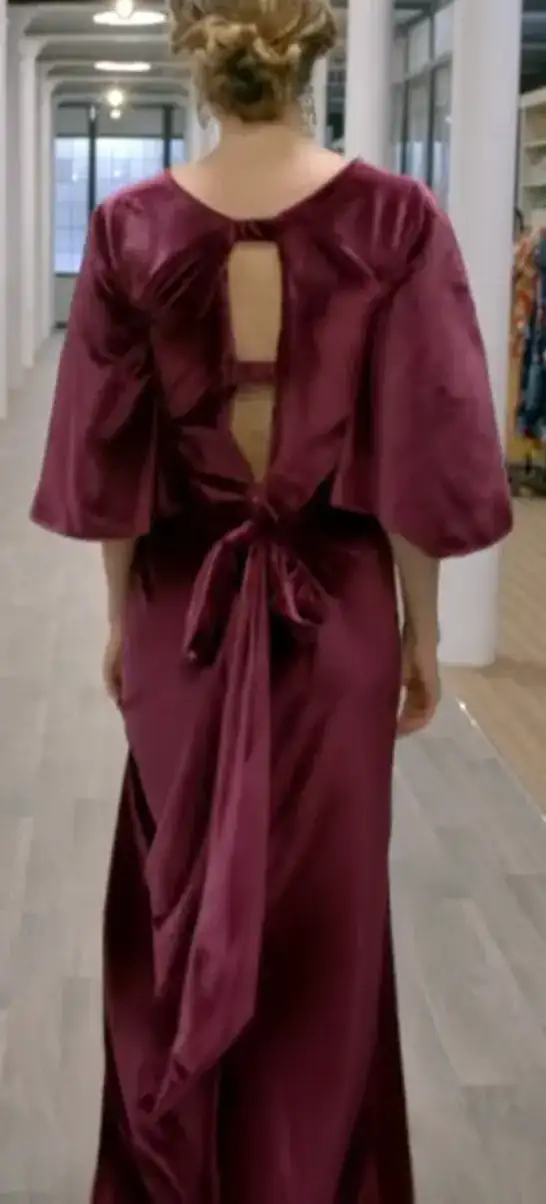
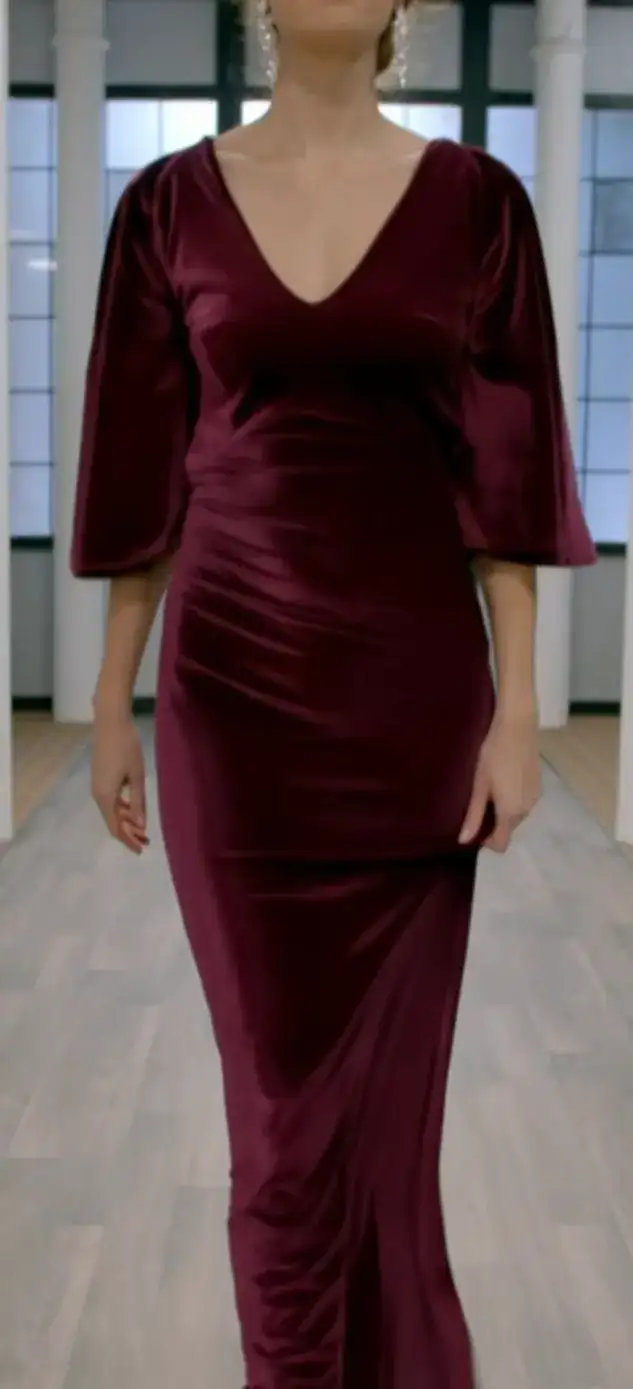
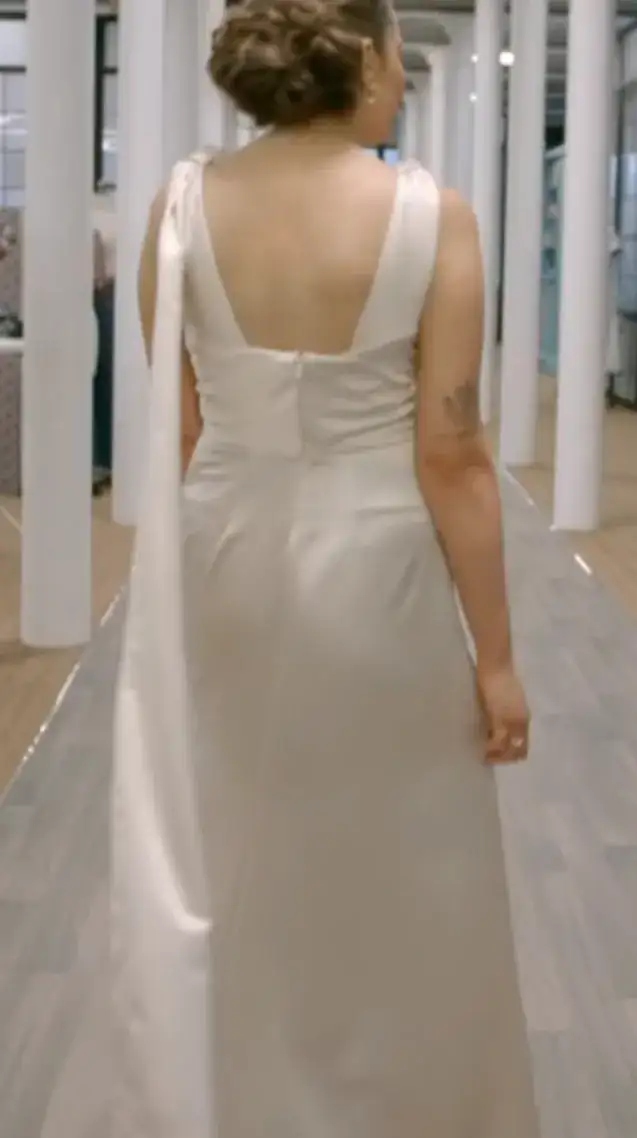
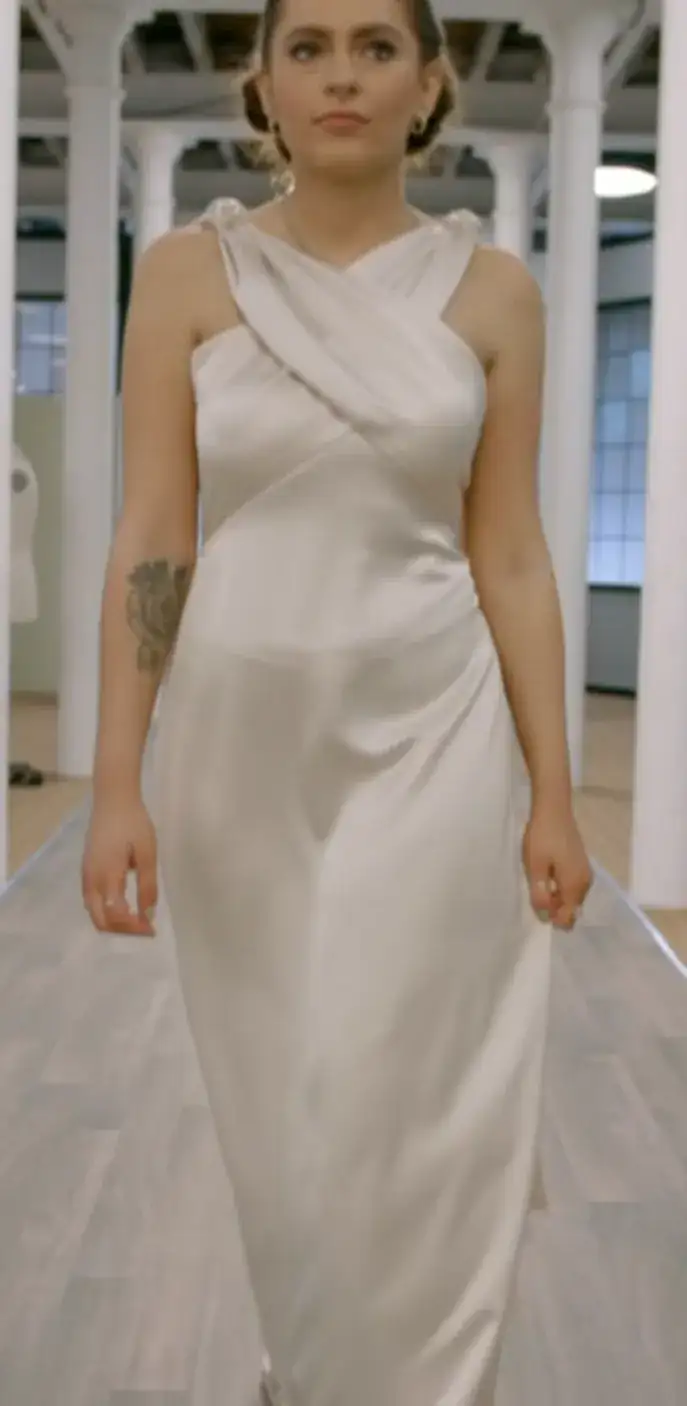


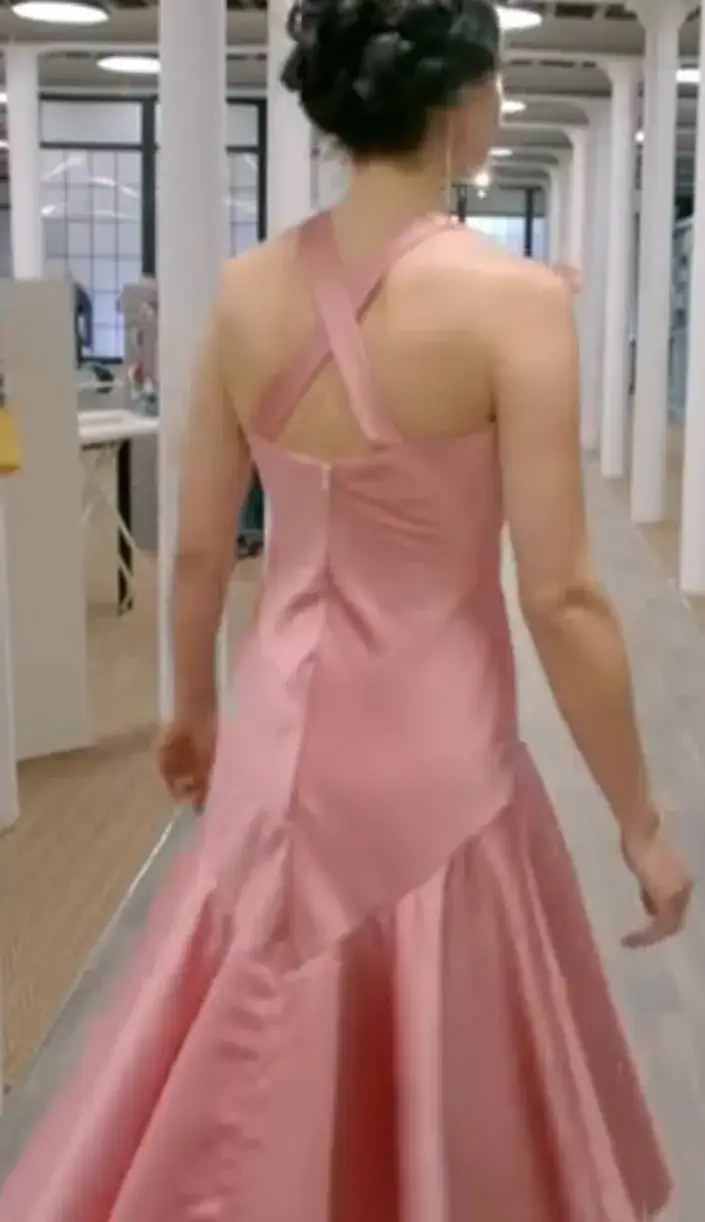

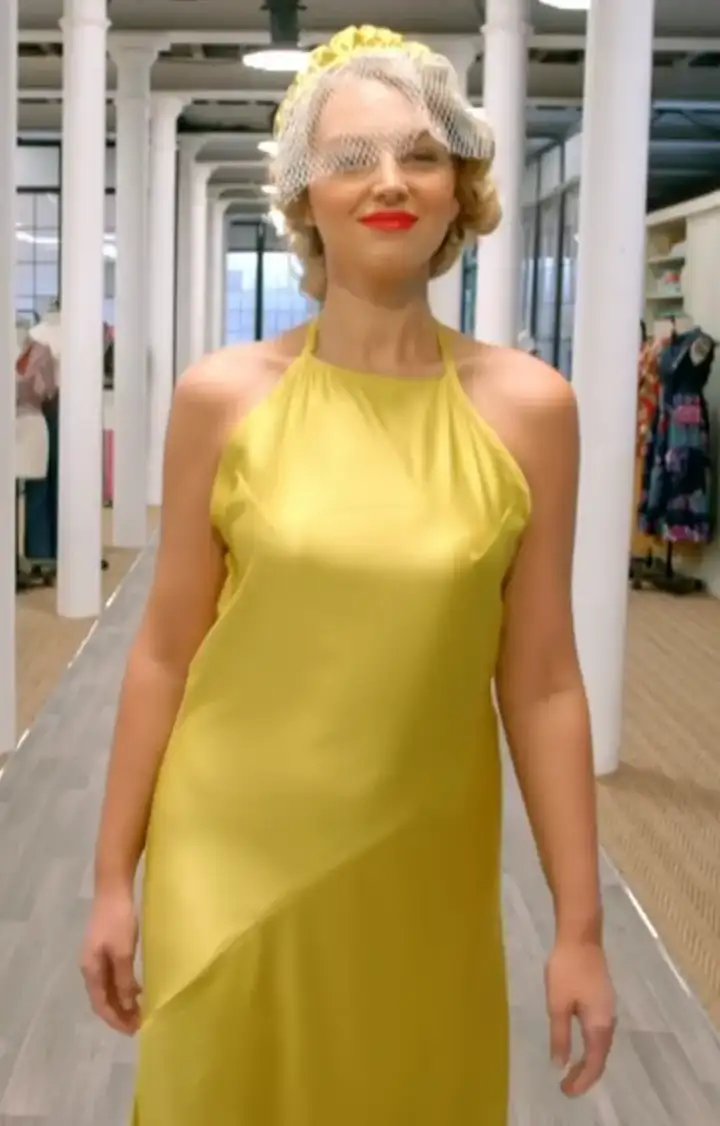
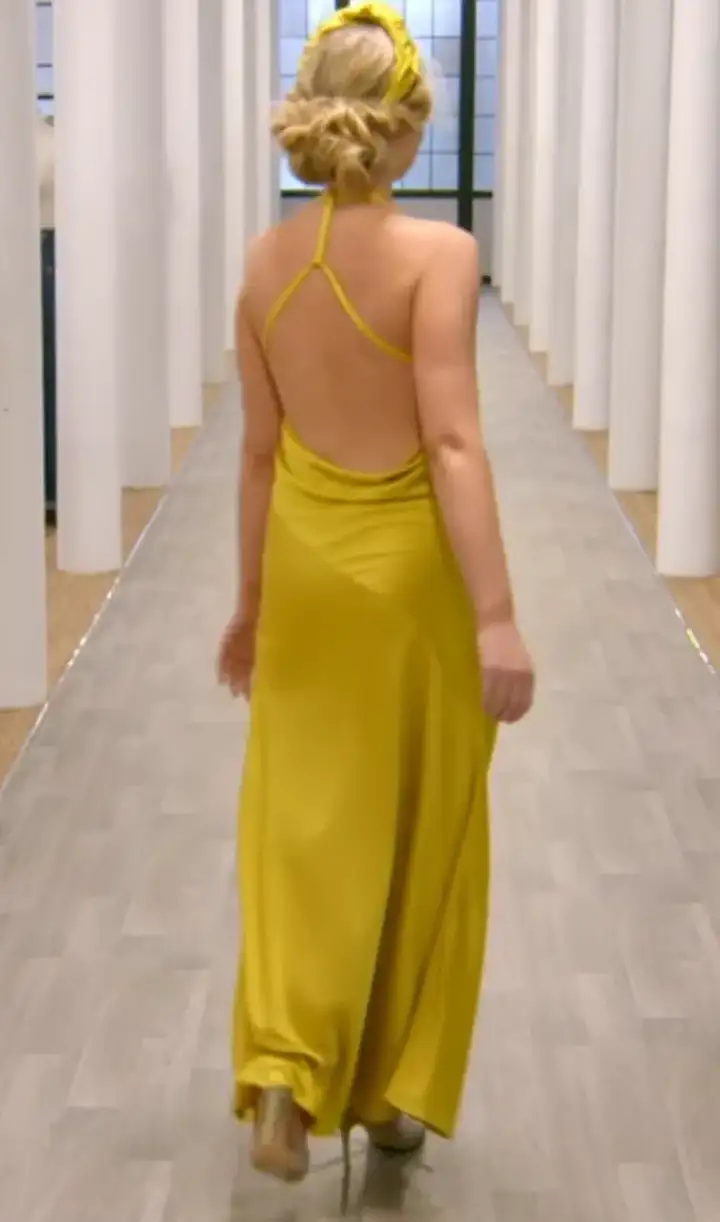
Annie was awarded Garment of the Week. Cristian was sent home.
Week 9 - Made-to-measure origami dress
Contestants have 5 hours 30 to make an origami dress (following an hour for cutting out fabric), using folding techniques to shape and style a garment.
Annie won garment of the week. No one was sent home due to the extreme closeness of the performance of the four contestants.
Week 10 - The Final - Made-to-measure glamorous jumpsuit suitable for a celebrity
Contestants have 5 hours 30 to make a glamorous jumpsuit suitable for a celebrity on a red carpet.
Annie won the final.
Contestants
The 12 contestants in The Great British Sewing Bee Season Eight were:
Angela - an award-winning school nurse in Lancashire with five grandchildren aged 1 to 6, who started making all her clothes 45 years ago when training to be a nurse. She is a member of the Women's Institute. Angela was sent home at the end of week six having come 6th in both the pattern and the transformation challenge.
Annie - a 32 year old from Surrey who lives with her boyfriend Dan, and who is a junior fashion accessories buyer for a UK retailer and was taught sewing by her grandmother, Monica, who is from Ghana. She has a passion for vibrant colours and for roller skating. She won garment of the week in weeks 6, 8 and 9. Annie was a finalist and won the competition overall.
Brogan - a modern languages teacher in a senior school near Burton upon Trent, originally from Edinburgh, who now lives with her fiancé in Leicestershire. She started sewing in primary school, she was a dancer / musical stage theatre actor in her childhood and is a big fan of Ginger Rogers. She has a three year old niece and has made several child's outfits. Brogan was a finalist.
Chichi - a research analyst and molecular biologist living in Surrey. Chichi was sent home at the end of episode two, having come 9th in the pattern and 8th in the transformation challenge.
Cristian - a fashion store manager living in Liverpool who grew up in Romania close to Dracula's Bran Castle and learned to sew from his mother. Cristian was sent home at the end of episode 8, having come 2nd in the pattern, 4th in the transformation challenge and using Lycra for their 1930s movie star gown (a fabric not yet invented in the 30s) in the made-to-measure.
Debra - a native Welsh speaker, who lives in Llanfairfechan, Conwy, North Wales, and loves to show off her glamourous self-sewn clothes at work at a medical manufacturing facility, where she is a PA. She moved to Manchester at 18 to study fashion but did not pursue it as a career. She has a cat called Olive, a son Albie, husband Andrew, and regularly takes early morning spin classes. She won garment of the week in weeks one, three and five. Debra was a finalist.
Gill - a public health intelligence analyst, who lives in Doncaster with husband Darren, and who was inspired to take up sewing by her great-grandmother, Ivy, who was always immaculately dressed and made clothes for herself and her family. She won garment of the week in week four. Gill was sent home at the end of week seven, having come last in both the pattern and transformation challenges.
Man Yee - a pensions actuary living in London, who started sewing at the age of 12 when she created a cosplay outfit for the character Haruhi Suzumiya for Comic Con in London. She likes bouldering with her competitive friends. She won garment of the week in week seven. Man Yee was a finalist.
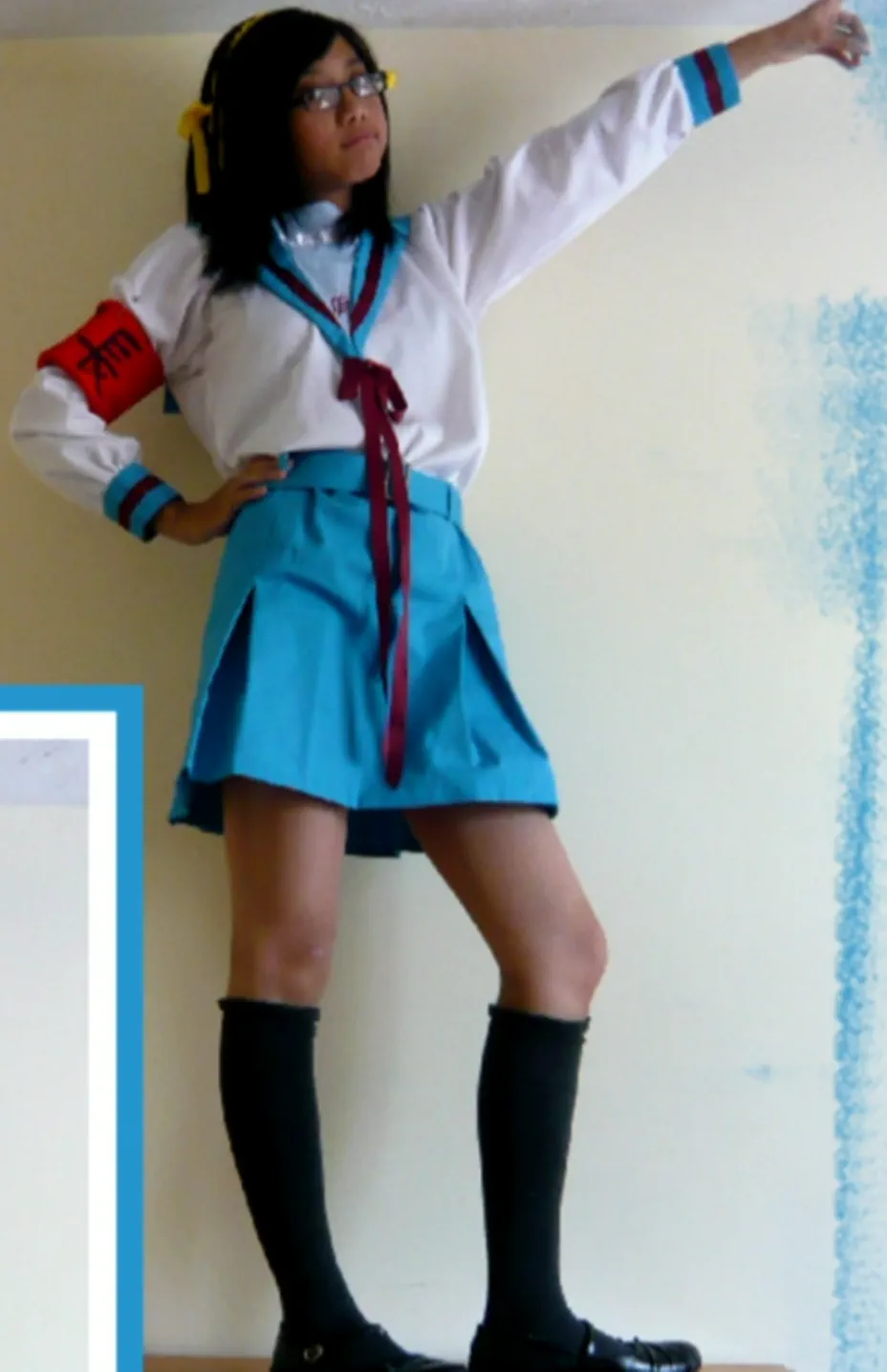
Marni - a veterinary surgeon based in Torquay, Devon and former member of the Army Reserve. She won garment of the week in week two. Marni was sent home at the end of episode five, having come 3rd in the pattern and 5th in the transformation challenge and a disappointing outfit in the made-to-measure.
Mitch - a theatre manager who lives in Cumbria, who started sewing during lockdown and has played in an ABBA tribute band with his girlfriend (now wife) Lisa. Mitch was sent home at the end of the first episode after coming last in both the pattern and the transformation challenge.
Richy - a baker who lives in Shrewsbury with his partner, Dave, he loves and recreates historical garments and undergarments, including over 50 bowties. Richy was sent home at the end of episode three, having come 9th in the pattern challenge and 6th in the transformation challenge.
Steve - originally from Essex but now living in Newcastle with his girlfriend, a 100km ultra-marathon runner and working as a running coach, a Millwall FC fan who took up sewing during lockdown (9 months ago). Steve was sent home at the end of episode 4 after coming last in the pattern challenge and 7th in the transformation challenge.
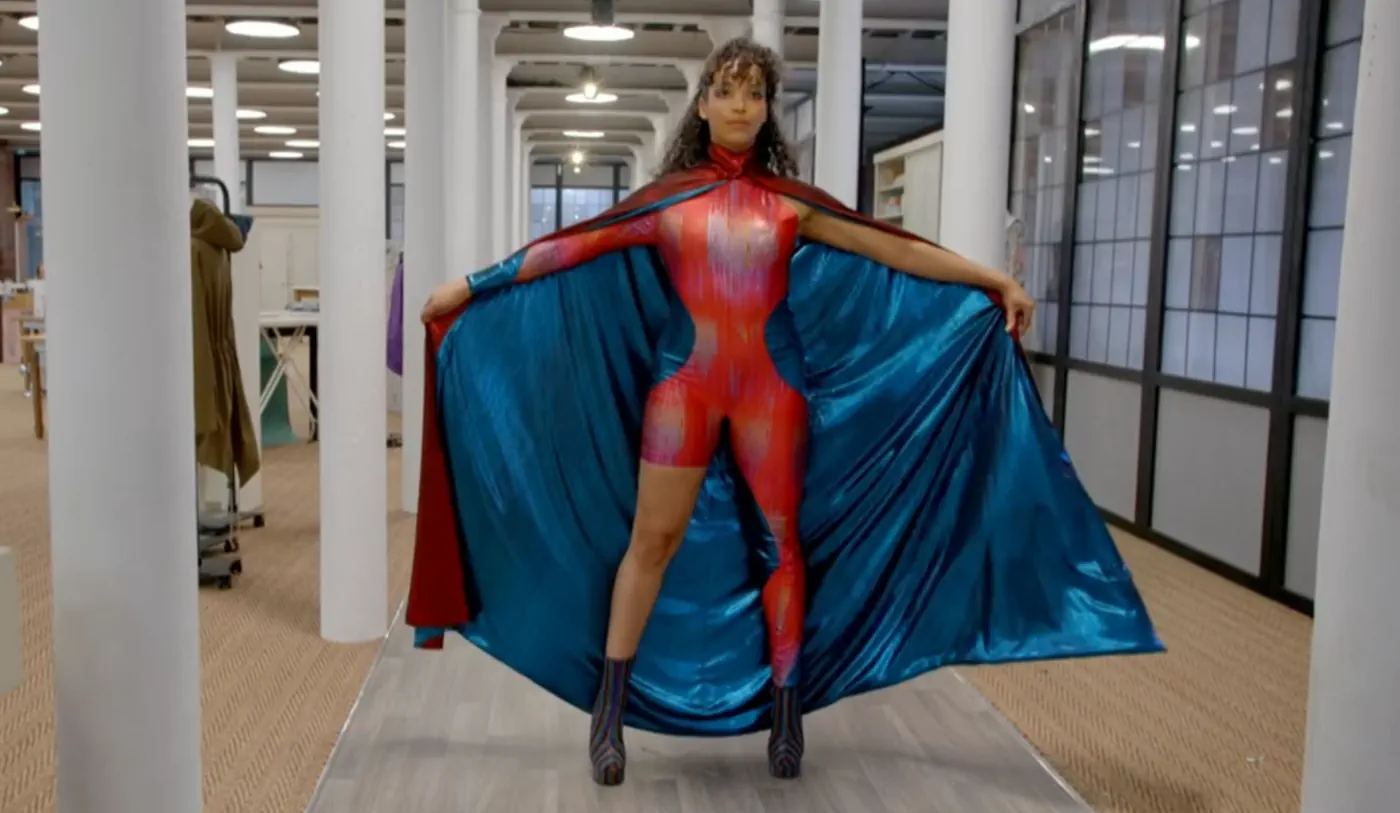
The pattern challenges included a wool mini-skirt with two piped patch pockets (2 hrs 45) (won by Angela), a pair of high-top trainers (4 hrs) (won by Man Yee), a shirred midi summer dress (3 hrs 30) (won by Brogan), a quilted jacket from fabric scraps (4 hrs 15) (won by Debra), a child's traditional sailor suit (3 hrs 45) (won by Man Yee), a parka (4 hrs 30) (won by Brogan), lace bra and knickers (3 hrs 45) (won by Annie), 1930's bib-front fastening Sailor's trousers (4 hours) (won by Man Yee), a kimono inspired dress, styled by Wakako Kishimoto and Esme Young (5 hours) (won by Annie), the Amorphous Dress designed by Esme and part of the V&A collection (2 hours 30) (won by Debra).
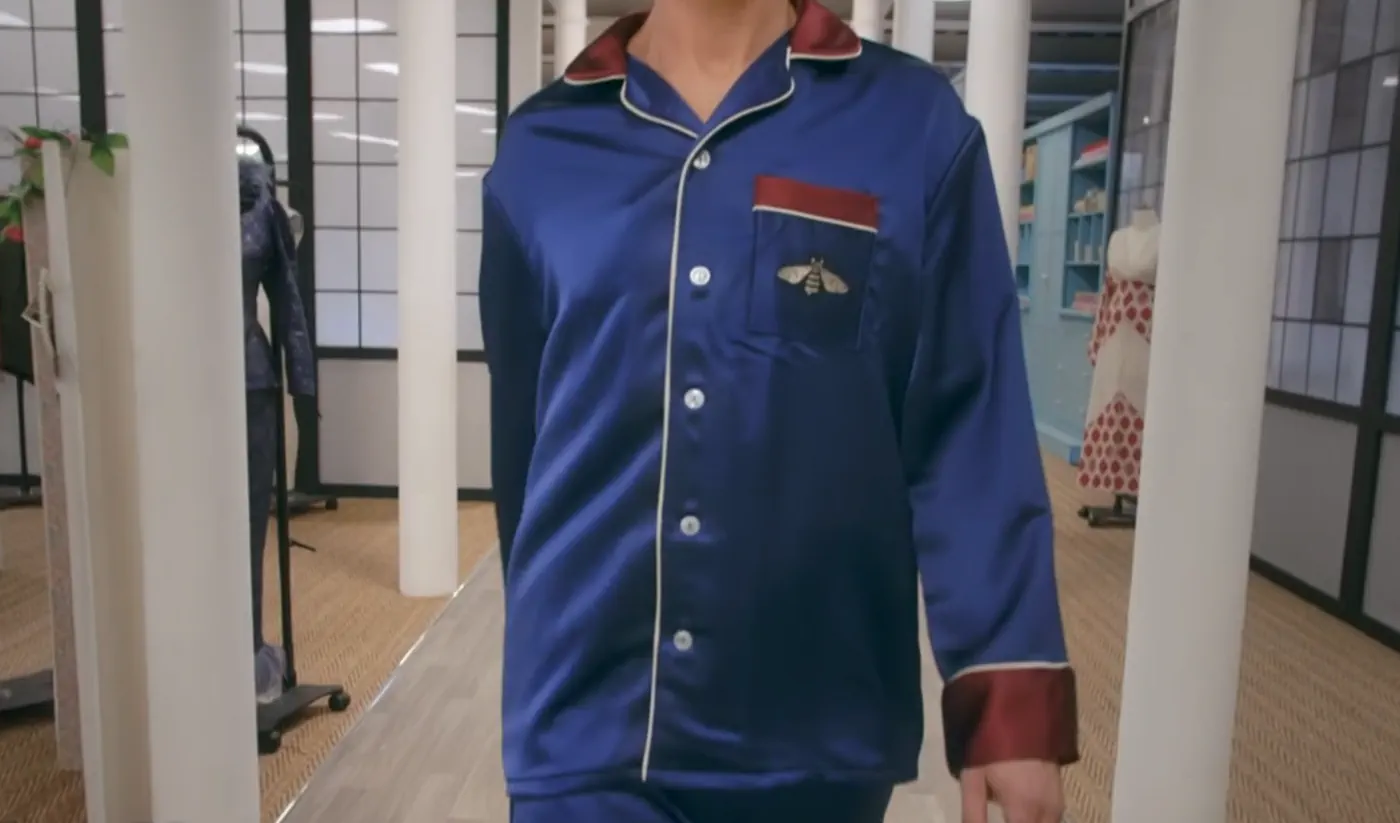
The transformation challenges included turning loungewear into a glamorous going-out top (1 hr 30) (won by Marni), netball outfit into a glamorous daywear garment with pleats (1 hr 30) (won by Brogan), hammocks into an adult summer garment (1 hr 30) (won by Angela), two overcoats into one coat (1 hr 30) (won by Man Yee), a child's outfit from items of old school uniform (1 hr 30) (won by Angela), a "load of old denims" and shirts into a stage outfit fit for a country music star (1 hr 30) (won by Gill), a going-out garment from pastel-coloured thermal sleep sets or as Patrick quips "nana to Rhianna" (1 hr 30) (won by Debra), shirts into a woman's 1930s blouse (won by Man Yee), repairing and renewing worn denim using Japanese sashiko technique (1 hr 30) (won by Man Yee), creating a party outfit from the offcuts from the previous 9 weeks (1 hr 30) (won by Man Yee).

The made-to-measure challenges included a wrap dress (5 hrs) popularised by Belgian designer Diane von Fürstenberg in the 1970's (garment of the week from Debra), a jacket inspired by a sporting hero (5 hrs) (garment of the week from Marni), a two-piece co-ordinated trousered outfit (5 hrs) (garment of the week from Debra), a maxi-dress made from duvet covers (garment of the week from Gill), a child's Halloween themed outfit with a 3D element (4 hrs) (garment of the week from Debra), outfit inspired by David Bowie (5 hrs 30) (garment of the week from Annie), luxury pyjamas for a man (5 hrs, filmed Thursday 14th October 2021) (garment of the week from Man Yee), bias-cut gown inspired by 1930s movie stars (garment of the week from Annie), origami dresses (5 hrs 30) (garment of the week from Annie), a glamourous jump-suit suitable for an exclusive party (5 hrs 30).
The winner of The Great British Sewing Bee Season Eight was Annie.
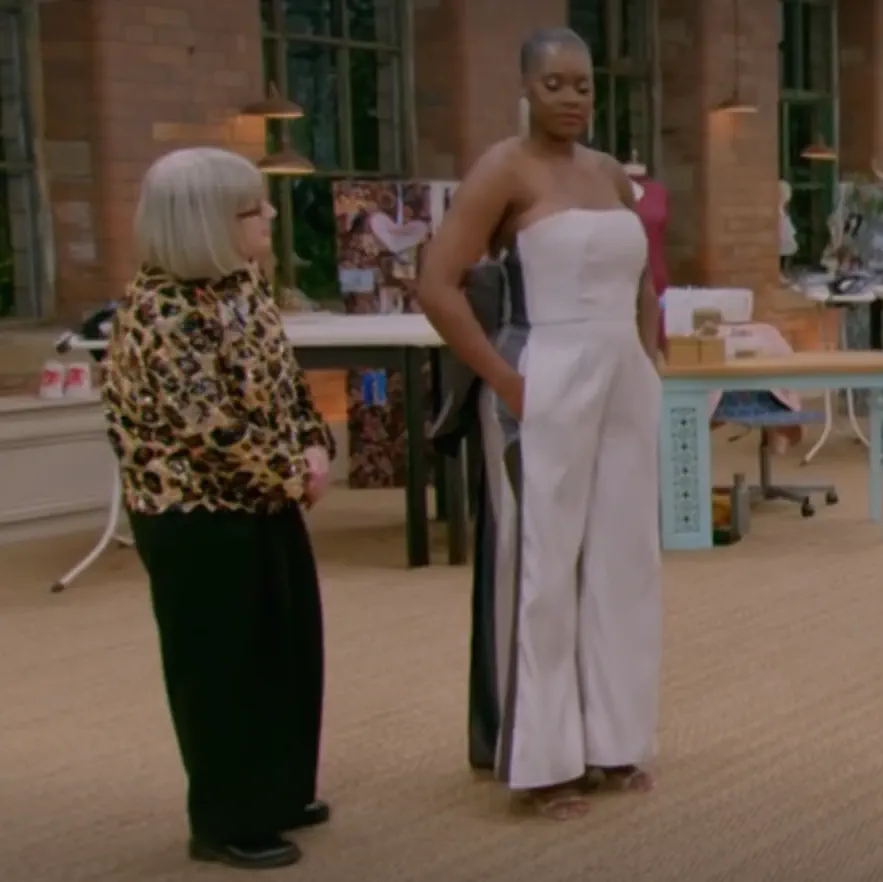
Filming and staff members include: Fiona Parker - Sewing Team and Fabric Buyer, Hannah Mellows - Production Coordinator, Hannah Riordan - Contestant Runner, Kirsty Podlaski - Casting Researcher, Montana Bent - Casting Assistant Producer, Natasha Chinyenze - Studio Runner, Rebecca Cole - Specialist Associate Producer.



